|
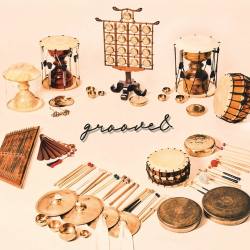
|
-
Groove& is a South Korean percussion trio with the slightly unpromising name, at least in its transliteration. The skill and precise interaction of the three women - Sang-kyung Lee, Min-ju Sohn and Ha-gyeong Kim - is extraordinary, and every sound has musical significance. Using a wide array of Korean instruments they make music of great melody and texture with a tonal spectrum more fundamental than twelve semitones or chordal harmony, one made of higher and lower, thinner and thicker, longer or short sounds that make perfect, cross-cultural, melodic and internationally accessible sense.
Read Andrew Cronshaw's review and listen to some of the music.
|

|
-
It is hard to believe that this solo album from Alessia Tondo, a singer with a such high-profile band as Italy?s Canzionere Grecanico Salentino, should vanish under the radar, but that seems to be the case for the 2021 release of Sita. Intended, she says, as a healing album, this very personal collection of songs is wondrously intimate. Tondo possesses a siren voice and uses it to full effect - a soft lulling call that crosses all manner of barriers, demonstrating its beauty as she layers tracks and harmonizes with herself.
Hear the varied sounds of this remarkable vocalist and read Chris Nickson's review.
|

|
-
New in our file of short reviews and audio introductions:
Here's a pair of digital-only EPs from the bouzouki player Jens Ulvsand, who is probably most familiar as a member of the Danish Trio Mio. Born out of something to fill the long days of isolation during Covid lock down, Trad-Groove 1 & 2 are explorations of traditional music, but with a twist. Ulvsand uses bouzouki and a variety of other instruments on this pair of recordings to achieve different results on each.
Come listen and get a few more Sound Bites
|
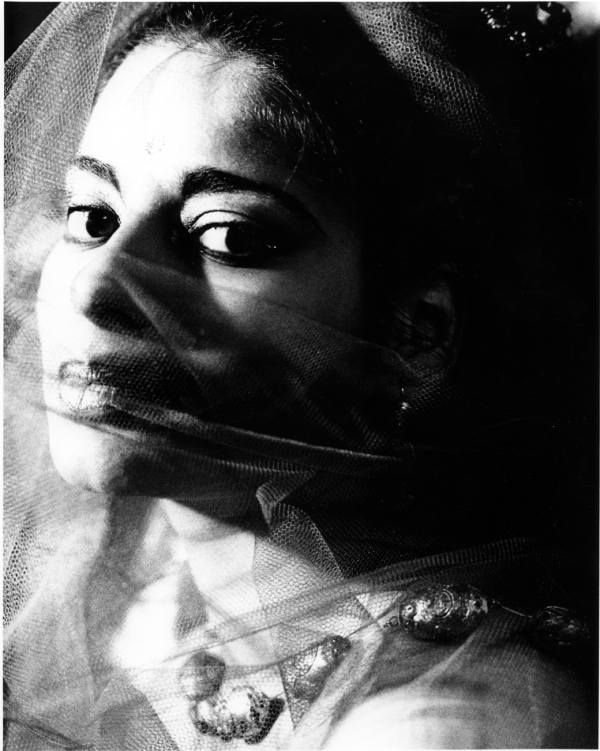
|
-
Ever So Lonely: An interview with Sheila Chandra
"The trouble was I wasn't representative of the larger Asian communities in the UK. I wasn't Punjabi, Gujerati, Bangladeshi, Muslim or Hindu... I wasn't even full blooded Asian – I have an English grandmother who never set eyes on England... Yet I was having to represent all these communities under the disapproving eye of the first generation who had emigrated who felt I was 'bastardizing' their culture with fusion. They didn't see that our culture had to adapt to its context and exist as a living breathing tradition to survive."
Sheila Chandra talks with Chris Nickson about a magic time in the 1980s when everything changed.
|
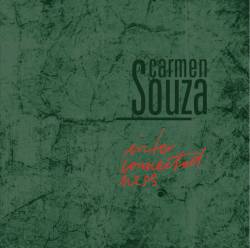
|
-
Portuguese is an airy, sonorous language that lends itself especially well to music, whether expressed in the mother tongue, or inflected with Brazil's multi culture, or fused with the Africanisms of the former Portuguese colonies. Cape Verdean Carmen Souza embodies that affinity; her music, vocals and lyrics are a feast of sensuality, intelligence, rhythm, and the unexpected. Souza's voice, and how she invents and reinvents it in each tune, is one of her several musical gifts, which include composing, arranging, and as a guitarist and percussionist. Her interpretations of songs on Interconnectedness are so intimate that they seem to be an extension of her very self.
Carolina Amoruso delves into the many voices of this unique artist.
|
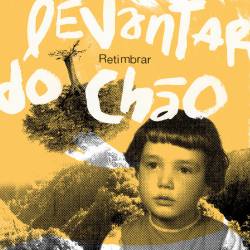
|
-
Retimbrar, based in the city of Porto, is at core a group using the wide range of Portuguese traditional percussion with vocals, but its instrumentation expands to cavaquinho, violin, bass, flutes and more, and for Levantar do Chăo they collaborate with a range of individual and ensemble guests, so that the overall impression isn't of a percussion album but a collection of songs, richly varied in melody, rhythm and arrangements.
Andrew Cronshaw reviews.
|
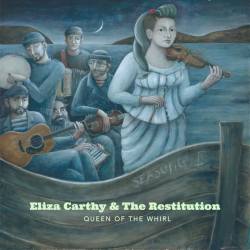
|
-
It's hard to imagine that Eliza Carthy is celebrating her 30th anniversary as a professional musician. It feels like no time at all since she began, and yet it's also as if she's always been there, relentlessly experimental as she kicks at the tradition and writes her own material to sit alongside it. Folk music, maybe, but like her parents, Martin and the late Norma Waterson, her definition of the term has been very elastic and full of surprises. She pulls more than a few here, with a collection partly selected by Twitter. Right from the beginning she wrong foots the listener with a vocal melody on "Whirly Whorl" that works across the instruments. For a moment it's discombobulating, but makes it apparent that Queen Of The Whirl isn't an album of reprises. It's a radical reworking by Carthy and her outstanding band, The Restitution.
Hear more surprises and read Chris Nickson's review.
|
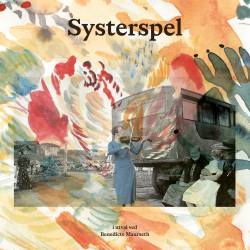
|
-
It's been 25 years since a compilation called Meisterspel assembled the work of the some the 20th century's great Norse fiddlers. The problem? Every one of them was male. Celebrated hardanger fiddle player Benedicte Maurseth has put together this response – Systerspel – a pair of CDs with all women featured. Maurseth chose the tracks and wrote the book for which this is the soundtrack.
It chronicles a century, beginning in 1919 with Kristiane Lund's "Fykerud's Farvel Til Amerika," one of the very first pieces of music ever recorded in Norway, and carries through to recent days with works by Ragnhild Furebotten, Mari Eggen, Susanne Lundeng, Annbjřrg Lien and many more. Spend 100 years with the female fiddlers of Norway and read Chris Nickson's review.
|
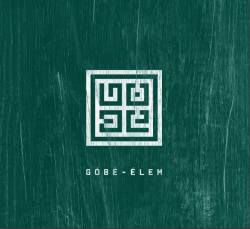
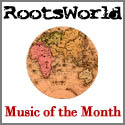
|
-
Góbé are a Hungarian band that formed fifteen years ago in Budapest. The band has travelled all around the Carpathian (Pannonian) Basin, a huge area that covers not only Hungary but extends into Romania, Ukraine, Serbia, Croatia, Austria, Slovenia, and Slovakia. "Góbé" translates as "a man with a twisted mind" and perhaps that phrase aptly serves as the band's manifesto since they integrate a vast number of different musical styles into their interpretations of Hungarian music.
An oft-levelled critique (for better, or worse) of folk-rock is that the music may not be reverential of source materials or respectful of source singers; but, it is worth noting that Góbé have both the training and the chops to allay jaded fears.
Read Lee Blackstone's review and hear some music.
Góbé's album Elem is our selection for Music of the Month for December.
|
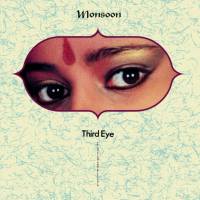
|
-
At this distance, it's hard to imagine the musical landscape of 40 years ago. Plenty of synths, crash, New Romantics and elaborate hair. MTV was still a novelty. World music hadn't acquired its awkward name yet. Such as it was, global sounds comprised ethnological releases, classical music from different cultures, and Bollywood soundtracks that didn't reach beyond the Asian population. Rock bands had added a sitar here and there in the 1960s, but there was no real cross-cultural invention. Then came Monsoon and the world shifted.
The single "Ever So Lonely" was initially self-released in 1981 and resurfaced a year later on a larger label. The brainchild of musician and producer Steve Coe and multi-instrumentalist Martin Smith, it was the ur-text of so much of what we take for granted today. All those fusions, the Asian Underground, so many of the albums in your collection - they all were born out of this. They also gave singer Sheila Chandra her first platform and taste of stardom. It's impossible to overstate the importance of "Ever So Lonely," or the album Third Eye.
Read Chris Nickson's review and listen.
|

|
-
In his review of the album Where Is Home (Hae Ke Kae), Andrew Cronshaw writes:
"In the past year I've seen two concerts by South African cellist/singer Abel Selaocoe, who's becoming deservedly celebrated here in the UK. Each was an absolute tour-de-force.
There was a long standing ovation at a sold-out Queen Elizabeth Hall in London for the brilliant Abel Selaocoe - cellist, singer, composer, improviser, performer, a shining light in bridging between western classical, African and improvising music, in collaboration with his trio and the string players of the Manchester Collective. Inspiring, indeed awe-inspiring, and liberating..."
Read Andrew's review of Selaocoe's debut album. It includes works from the album and a full concert video.
|

|
-
Some three years after his passing in mid–2019 at 77, we have the final studio album by Mac Rebennack (aka Dr. John). Karla Pratt (executive producer and estate executor) relates that Things Happen That Way is her father's long-contemplated tribute to the country and western music Rebennack imbibed as a youngster. But the repertoire, pacing, tone, and laid-back groove comprise something closer to musical autobiography and memoir.
Michael Stone takes us for one last visit with the Doctor.
|
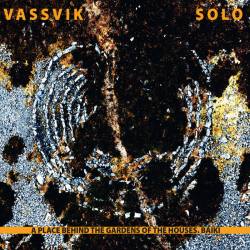
|
-
Torgeir Vassvik is a Coastal Sámi from the small fishing village of Gamvik at northern tip of Norway, on the Barents Sea. The Sámi, northern Europe's indigenous people, are known for their unique form of vocalisation, the joik, in which the joiker expresses, indeed inhabits, the essence, of an animal, another person or a place. Vassvik, one of the most primal, bold, raw, committed performers you're likely to see or hear, has evolved ways of keeping it as essentially personal expression. A Place Behind The Gardens Of The Houses - Báiki, his third album, is the first in which he makes all the sounds himself and has done most of the recording and producing.
Read Andrew Cronshaw's review and hear some of the music.
|

|
-
Given that fact that Rachele Andrioli has been involved with the music of Southern Italy for a number of years, it is surprising that this is her first solo album. Better late than never, though, because the singer and multi-instrumentalist offers a global garden of delights, all flavored with the warmth of her homeland. Her original material nestles easily beside pieces by Victor Jara, the great Enzo Avitabile, Rita & Daniele Durante (who founded Canzione Grecanico Salentino the 1970s, laying the ground for most modern Italian music from the south of the country), and the remarkable Qawwali singer Nusrat Fateh Ali Khan. Quite a challenge to set herself, but she more than lives up to it. Perhaps there's a reason Leuca has taken so long to reach fruition – perfectionism.
Read Chris Nickson's review and listen to some of the music.
https://www.rootsworld.com/reviews/andrioli-22.shtml
|

|
-
Even when it involves an artist as auspicious as the late and indubitably great acoustic guitarist Bert Jansch, an eight-CD set is a massive commitment. With tracks here ranging from 1966 to 2006, five years before his death, the remarkable thing is that so much material was kept. But be glad it was. Be very glad. It's a chance to hear the evolution of the man and his approach to songs as they recur over the years - the perennial "Blues Run The Game," for instance, and the definitive fingerpicked instrumental "Angi" – also called "Angie" in a few instances here – are prime examples. Jansch was classed as a folk musician, but the reality was so much more.
Chris Nickson reviews.
|

|
-
Norwegian violinist and composer Inger Hannisdal's North South East West presents ten of her original compositions performed alongside four other players. Norway famously has a strong and thriving fiddle tradition and new releases from emerging artists offering their own take on the music occur with some regularity. What soon becomes clear here is that the influence of that Norwegian musical heritage, though not altogether absent, is never central. Perhaps significantly Hannisdal chooses to list her instrument as violin and not fiddle and the album title itself implies a wish to look outward in every direction for inspiration.
Mike Adcock explores the debut album of this Norwegian artist.
|


|
-
Cory Seznec is an artist who's flown well under the radar for a while. The Franco-American musician and singer's third full-length album comes after a gap of five years. Although he recorded all his tracks in just three days, there's never a sense of anything being hurried. It's all performed with touching good grace, and a warm, inviting voice. Seznec is an outstanding fingerpicker on both guitar and banjo, always assured, completely at home in the blues, yet never sounding like any of the earlier generations of performers.
There's a lightness of touch in his performance that's immediately appealing, and more than a few touches of West African music in his work, too.
Read Chris Nickson's full review and listen to some of the album.
|

|
-
Among all the role-playing, power-ballad glitz of the 2017 Eurovision Song Contest there was the still, quiet, sincere voice of Salvador Sobral. No glitz, no dancers, just him in his normal clothes, singing a beautiful song in Portuguese written by his sister Luisa Sobral.
Says Andrew Cronshaw, "I'd watched him win Portugal's own competition for the country's Eurovision entrant, which in itself was an affirmation from his home country. That he went on to win Eurovision with its massive international voting audience was extraordinary and encouraging. In the winner's reprise of the song he duetted with Luisa, and at the following year's final, after a heart transplant, he duetted in it with iconic Brazilian composer and singer Caetano Veloso."
Five years later came the opportunity for Andrew talk to him.
|


|
-
The harp-lute known as the kora continues to provide one of the most popular sounds to come from the African continent. It is distinctive and beautiful, with an equally unmistakable visual appearance, and first became widely known through the international touring of Keda Fodéba's African Ballet in the1950s which featured two kora players. Each subsequent decade has seen the emergence of more fine players including Mory Kanté, Toumani Diabaté, Ballaké Sissoko and Sona Jobarteh. Such artists have shown an interest in collaborating with musicians from different lands and different musical backgrounds whilst maintaining a deep respect for the the Mandinka tradition from which their music sprung.
Mike Adcock reviews albums from two more kora-players, Dawda Jobarteh and Momi Maiga.
|
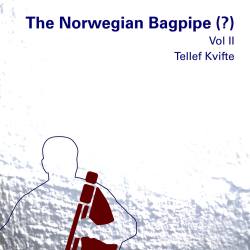
|
-
There's a popular association between Scotland and bagpipes, but actually there are long bagpipe traditions all over the world, and Scotland is a relative late-comer. But, while there are Swedish bagpipes, there's no evidence of a bagpipe tradition in Norway. Not to say they were never there, though, and as Tellef Kvifte observes, the ringing sympathetic strings and double-stopping technique of Norway's Hardanger fiddle (hardingfele), a much younger instrument than bagpipes, create something of a drone effect. "So," says Kvifte, "in the 1990s, I decided that the bagpipe had to be the solution for a wind instrument that could be used for Hardanger fiddle tunes." And what he says, and plays, is worth listening to... Andrew Cronshaw reviews.
Andrew Cronshaw reviews.
|
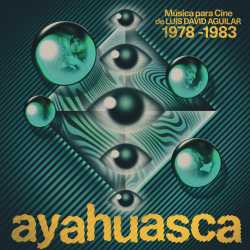
|
-
Soundtrack composers from Ennio Morricone to Piero Umiliani or Ryuichi Sakamoto to Lalo Schifrin have all used their scoring opportunities to mix genres into undescribable blends, practically creating new musical subgenres during the process. Freaky, acid grooves find themselves nudging up alongside choirs, symphonic percussion, odd drones, field recordings, and noise in these composers' most challenging scores. All of which connects them to the work of Peru's Luis David Aguilar, a prolific musician and composer who wrote music for television shows, advertisements, and film. Aguilar, whose work blends the avant-garde with classical composition and some of Peru's native traditions, was one of a number of Peru's more experimental film composers, such Walter Casas and Seiji Asato, coming to prominence in the 1970s.
A review by Bruce Miller.
|
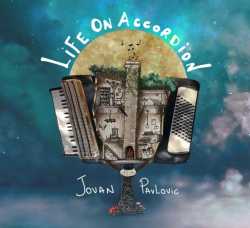
|
-
Norway-based Serbian accordionist Jovan Pavlovic has had many projects including his band Bengalo. Now comes his first entirely solo album. He's previously played his a piano-accordion in the standard Stradella-type set-up, which has piano keys for the right hand, and for the left a matrix of buttons each of which links reeds as a chord. But on most of this album he's switched his instrument to free-bass, in which the left-hand buttons play single notes, not chords. This means the notes skip and mingle from the two sides, rather than right-hand melody with left-hand chordal accompaniment.
"I decided to start working on it because of lots of free time during the pandemic," he told me. "Since I started playing with free bass, a whole new world has opened up for me. I can form chords as I like, I can play separate lines and rhythmical figures which live their own life and are totally independent from each other. It's like having two keyboards!"
Andrew Cronshaw shares works from this solo album, Life On The Accordion.
|


|
-
Islais A Genir is a landmark in Welsh music. And, showing the label recognizes and supports that, the CD comes in a beautifully produced hardback book-type pack with some fifty pages of photos and interesting, discursive writing in Welsh and English about the material. VRÏ (it's an old Welsh word meaning 'up' or 'levitating,' a sense of 'upness') is the trio of fiddler-singers Aneirin Jones, Jordan Price Williams and Patrick Rimes. What they make is music of six interacting voices, three male human and three of bowed instruments: two fiddles and cello or bass.
Read Andrew Cronshaw's review and hear some of the music.
VRÏ's Islais A Genir is our selection for Music of the Month for November, 2022. Subscribe monthly and get a full download of the album and book.
|

|
-
Okra Playground's Itku frequently mentions the Earth turning darker. As a metaphor, this looms large for a world that feels as if it is spinning off its axis, our times clouded by pandemic, conspiracy theories, war, climate crises, and other modern ills. At the same time the Finnish band's name is of the earth - Okra meaning 'ochre,' the particular color of soil and clay on which the band treads. The group is anchored in Karelian traditions, and the set list mixes several original tracks which draw on beguiling wordplay such as one might find in the Finnish national epic, the Kalevala: lyrics redolent with a coursing, vibrant natural world, set against human foibles both tender and violent. The sextet continues to blend traditional folk instrumentation with electronic soundscapes, balancing experimentation and pop flair. Singer and fiddler/bowed lyre (jouhikko) musician Paivi Hirvonen is again a guiding light, and her voice joins with the two kantele players in Okra Playground, Maija Kauhanen and Essi Muikku. Okra Playground's sound is rounded out by Sami Kujala on electric bass; Veikko Muikku, accordion and synthesizer; and Oskari Lehtonen, percussion. Additional electronic augmentation was provided by Sami Zimmermann on most of the album tracks. https://www.rootsworld.com/reviews/okra-22.shtml
Lee Blackstone leads you into the darkness of the Finnish band's third album.
|

|
-
"This group of UK musicians who are creating another pathway for jazz are not leaning toward intellectualism or crowd pleasing but are instead marrying the two concepts by being authentic. Their experiences come from hip-hop, afrobeat, world music and avant garde jazz. They come from the African and Caribbean diaspora and they live in London, which despite Brexit, is a multicultural society with many different languages and cultures being the norm. Edward Wakili-Hick's new album project Nok Cultural Ensemble, is a modern sonic exploration of African and Caribbean rhythms. It introduces the Nok Culture, a civilization that thrived in Nigeria 2,500 years ago which among other things, produced hyper modern sculpture. .."
Lisa Sahulka reviews. Listen in.
|
Music of the Month
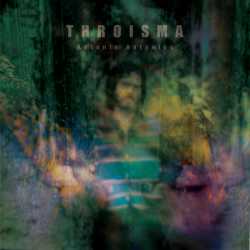
|
-
Throisma is hardcore, really hardcore, but please don't let that get between you and this music, because this may be one of the most interesting recordings you will come across this year.
Regular readers know Antonis Antoniou as a member of Monsieur Doumani, so let's be clear, this has nothing to do with that band. This is a rock record with a 70s vibe, yet with a very 21st Century electronic undertone, and very clear Eastern detailing. For those lucky enough to understand Greek, you'll find a Cypriot artist, singing in the local dialect with its very characteristic cadences and hard consonants... There is a hint of rage, but also a spirit of celebration, an undercurrent of knowing that your life can be turned upside down or even ended without notice, regardless of your age.
Nondas Kitsos reviews.
|

|
-
Britain's Phil Tyler has been a quiet fixture on the folk scene for many years, emerging as an additional musician with Cordelia's Dad when they toured Europe, then marrying and performing with their bassist, Cathy Tyler, in a duo that stripped traditional American and English songs down to their skeletons and presented them as bare, powerful things. This time around he's working with a different singer, Sarah Hill, on a set of (mostly) traditional English music titled What We Thought Was A Lake Was A Field Of Flax. The layout is much the same as in the past, with Phil Tyler on guitar, banjo, vocals, and Hill singing. Everything is spare, with voices front and center...
Chris Nickson shares a review and some music with you.
|
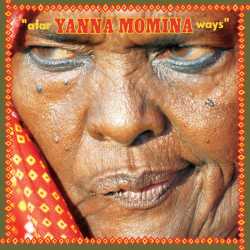
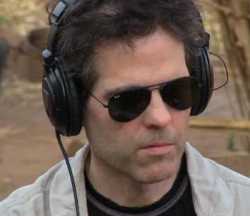
|
-
Yanna Momina is a singer from Djibouti, on the horn of Africa. She became known locally for her extraordinary and powerful delivery. Record producer Ian Brennan recorded Momina on her home turf in the spring of 2018 drawn by what he describes as her "kamikaze vibrato," also telling in the sleeve notes to Afar Ways how she is rare amongst the Afar people in being a woman who writes her own songs.
Read Mike Adcock's review and hear the music.
Then move on to the hows and whys of music like this, in Mike's in-depth interview with producer and recordist Ian Brennan.
"What I'm looking for in music, what I'm trying to convey is intimacy. The intimacy of one voice, one guitar, singing original songs captured in a recording can be something invaluable, a thing of supreme beauty, and that is why I like live recording, why I like field recording, because you're listening to something that actually occurred, for better or worse, versus a simulation."
|
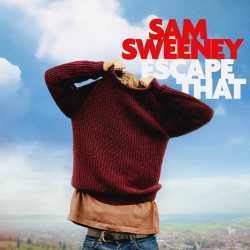
|
-
Over the last 15 years, Sam Sweeney has established a reputation as one of the go-to fiddle players in English folk, as his stints with Bellowhead and the Fay Hield Band testify. But with Escape That he's definitely spreading his wings, with 11 tracks culled from 20 pieces of music he created on synth and guitar (but apparently not violin). As he developed the tracks, anything that seemed like a hook was kept and everything else tossed away, then the hooks were joined together. The result is definitely folk pop, and Sweeney proclaims it loudly. It's an ambitious idea, especially where other instruments tend to be consigned to a supporting role and the fiddle takes the lead, which is generally the case.
Read Chris Nickson's review and listen to some of the music.
|
Music of the Month
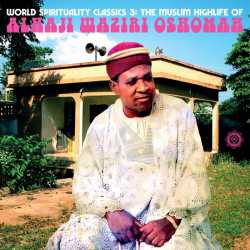

|
-
The music on The Muslim Highlife of Alhaji Waziri Oshomah was highlife getting a much needed makeover. Alhaji Waziri Oshomah and his bands de-emphasized the jazzy swing and large horn sections of highlife's outdated past, and instead, brought local rhythms to the foreground, allowing electric guitars and keyboards to drive languorous, unhurried melodies for extended grooves. Luaka Bop's latest in its 'World Spirituality Classics' series demonstrates Waziri's leisurely approach with a collection of 7 songs anywhere from 8 to 17 minutes long.
Perhaps what makes Waziri's brand of highlife trance so special comes from his home territory in Auchi, located in Northern Edo state in southern central Nigeria. Edo is a place that has found Muslims and Christians intermingling peacefully for decades, a fact that adds complexity to the typical understanding of Nigeria's Muslim north and Christian south.
Read Bruce Miller's take on this wonderful new album and hear some of the music.
The Muslim Highlife of Alhaji Waziri Oshomah is our selection for Music of the Month for October, 2022. Find out how to subscribe and receive a copy of the album, while supporting RootsWorld with your donation.
|
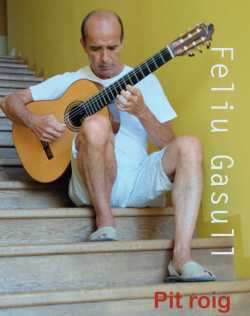
|
-
Spanish composer Feliu Gasull, who normally writes for larger forces, offers an album of (mostly) solo guitar music, Pit roig. Coaxing a rich palette from his instrument, Gasull gives voice to an alluring range of textures, technical flourishes, and tunings. The title track sets the mood for his five-part 'La Finestra,' shuffling through scenes as a camera might cut from one apartment window to another: different lives, same building. A lithe yet grounded quality to his writing, rendered with a sensibility that embraces the value of past and present, ensures that quiet reflections hold their own against evocations of pure exuberance.
Read Tyran Grillo's full review and listen to some of the tracks.
|
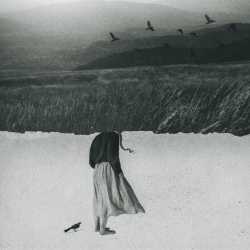
|
-
I very much enjoyed the showcase set at the 2015 Womex by Polish trio Sutari, with their quirky music, and vocals accompanied by a mixture of instruments including violin. For a self-contained creative unit, collaboration with another band can result in a dilution of the distinctiveness of both, but Tamoj, with Polish instrumental trio Bastarda, works really well, emerging as a single well-balanced five-piece. Bastarda takes early music as its source and develops it with arrangement and improvisation using clarinet (Pawel Szamburski), cello (Tomasz Pokrzywinski) and contrabass clarinet (Michal Górczynski). The deep woody tones of their three instruments create a rich foundation and environment for the Sutari duo's voices, violin, frame drums and occasional chimes of kankles (Lithuanian Baltic zither, close kin of Finnish kantele, Latvian kokle and Estonian kannel). Their material for the album draws on Polish, Lithuanian and Belarusian musical traditions, exploring the old cultures of these bordering countries, with original lyrics by Songin and Kapela inspired by, and sometimes quoting, tradition.
Read Andrew Cronshaw's review and hear a few songs.
|

|
-
New in our file of short reviews and audio introductions:
There's folk dance music, and then there's hardcore Nordic folk dance music. Optur definitely strut their stuff across the floor in the latter camp. The four-piece, which highlights fiddle and sax over a rhythm section, is the brainchild of violinist Sřren Korshřj, possibly best known for his time in innovative Danish folk-rockers Instinkt. The idea is to mix Nordic-influenced folk dance with improvisation, and it works like a charm. The first cut, "4 Drops," sets out the stall in belting style, while "Polska Nu," with its twisting melody, is full-tilt madness, giving space for sax man Mikael Fleron to show his ability. Even if you're just listening, you'll be out of breath by the end.
Come get a few more Sound Bites
|
Music of the Month
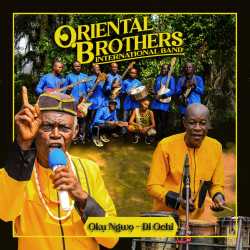
|
-
O Ku Ngwo Di Ochi is the first new record in over 20 years for Oriental Brothers International Band. Since their last efforts, key members have passed away; however, original members Ferdinand Opara- aka Dan Satch- and Livinus Akwila (Aquila) remain. Musically, little has changed. Clave rhythms continue to underpin guitar weavings, as songs truck across the 10-minute mark, forcing the body to react. To hear any of their earliest records is to hear highlife getting an infusion of sounds from Congo, with a de-emphasis on brass while the guitars eschewed chord changes for longer, more hypnotic grooves. It's this basic concept that fuels Satch, Aquila, and their band to this day... This release, digital only for now, houses five ten-minute tracks with no high points or filler.
Listen to some of the studio tracks, as well as a live performance, as you read Bruce Miller's full review.
|

|
Loudon Wainwright III seems to be enjoying a renaissance with his new album, Lifetime Achievement, which isn't bad for a man who's already spent a little over half a century as a singer and songwriter. Interviews and reviews are plastered everywhere, quite something for an artist who's just turned 76. The thing is, it's actually a very good record. Sharp, often lyrically acute, a little sentimental at times, and he still has one hell of a voice.
-
Read and hear why Chris Nickson thinks he's ready for the award.
|
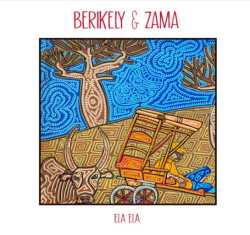

|
-
The wildlife of Madagascar is special and very distinct from that of Africa, and so are its people and their music, as are the instruments they play, prominent among which is a variety of stringed instruments including the valiha, marovany, jejy voatavo, lokanga and kabosy. Nowadays, there are also very Malagasy approaches to the standard acoustic or electric guitar. Malagasy singer and songwriter Berikely plays the kabosy, which is akin to a small guitar of varying body shape but often rectangular. Usually some of its frets don't go all the way across the fingerboard, an arrangement that helps with making chord shapes, as the player's fretting hand moves up and down the neck while the other creates an intricate, highly syncopated strum.
Berikely is an established, indeed veteran, artist in Madagascar, who now lives in France. There, with the help of the group's guitarist and arranger Erik Doboka, he has assembled an excellent band, Zama, that really grasps and masters the essence of Malagasy music. It comprises three Frenchmen - Doboka on guitar, bassist Thomas Boucherie, drummer Jean-Yves Boucherie - and Malagasy percussionist Bema Ratovondrahery.
Read Andrew Cronshaw's review and listen to some of the music.
Elaela is our Music of the Month selection for September 2022.
Subscribe now, or make a one time donation and get this recording as my 'thank you' for supporting RootsWorld.
|
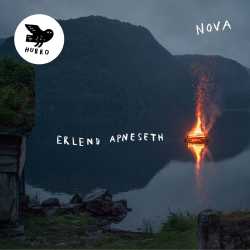
|
-
Emanuel Vigeland's mausoleum in the hilly, leafy northern suburbs of Oslo is a big, windowless, barrel-vaulted space, which one stoops to enter through a low doorway... it's a wonderful place to play or sing, if one keeps the music fairly uncluttered... it suits the ringing strings of solo Hardanger fiddle very well indeed. Notes overlay one another and become chords, double-stopping becomes orchestral.
Erlend Apneseth is a leading player of the instrument who, with his trio and other ensembles crosses the divide between traditional music, Norway's distinctive form of atmospheric, misty jazz that's a long, long way from New Orleans, and contemporary classical. For Nova he's entirely solo, which is the traditional context of Hardanger fiddle playing, and the building provides the ensemble for his minimalist playing... Read Andrew Cronshaw's review and listen to this unique open sound and space.
|
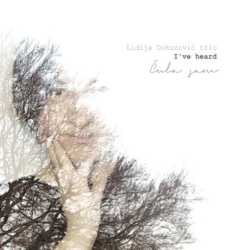
|
-
Lidija Dokuzovic is a versatile gem of Croatian tradition-rooted song, whether as singer with folk band Afion, leader of a vocal ensemble, as fishnet-stockinged rock-chick fronting the splendidly rousing Zykopops (inspired strapline 'Even worse than turbofolk'), or here with her Lidija Dokuzovic Trio.
The majority of the material on their debut album, Cula Jesam - I've Heard, is from Croatia, but some is from, or shared with, other traditions of the South Slavic area – Serbian, Kosovan, North Macedonian and Greek. Despite recent and less recent history, music recognises little in the way of borders. Dokuzovic and her Swedish partner Allan Skrobe met when both were mentors at the international Ethno music camps, and while they now live in the southern Swedish city of Malmö she hasn't lost touch with Croatia and its traditions, and returns often. With her in the trio are Skrobe on guitar and mandola, and double-bassist Jesper Nordberg, and they make a beautifully balanced unit. Right from the start, even before Dokuzovic's voice enters, it's clear that Nordberg is a very fine bassist, making big contributions...
Read Andrew Cronshaw's review and listen.
|

|
-
The second solo album from Finnish fiddler and singer Päivi Hirvonen builds with fire and intensity as it progresses. Serene as it begins, with fiddle and vocals on "Kulkuat/Travellers" – the only track with guests, two other singers lovingly layered alongside her own voice and some programming to flesh out the sounds – it's the lull before a storm of passion that takes in subjects close to her heart: shattering glass ceilings, polyamory, societal expectations and more. Ultimately, however, what's more important than the subject matter on Kallio is how it's presented. Here's where things become interesting. Hirvonen is superb at evoking atmosphere, like the darkness that creeps around "Varjot/The Shadows," where she multi-tracks violin parts to impart a strange, creeping eeriness...
Chris Nickson explores the darkness and the light of this new album.
|

|
-
Mohamed Abdel Wahab (1902-1991) was one of Egypt's greatest songwriters. Never afraid to incorporate influences from near and far, he gifted his music to humanity at large, casting through the lens of his native land a light of love that continues to glow in the many musicians he has influenced, from Omar Faruk Tekbilek to Anouar Brahem. Among them, too, is oud and viola virtuoso Simon Shaheen, whose renderings of Wahab's sound are now the subject of a vinyl reissue. Originally produced by Bill Laswell and released in 1990, The Music of Mohamed Abdel Wahab has given this seminal album new life in a different world.
Tyran Grillo explores this rich reissue.
|

|
-
Ethiopian popular music makes you stand up and take notice. From the myriad local genres that funnel into the sound, to the brilliance in color and tone of Mulatu Astatke's Ethio-jazz, to influences from the rest of Africa and the Gulf States, and the inevitable infiltration of Western pop, this amalgam is a national treasure that offers endless discoveries. Minyeshu Kifle Tedla's fifth release presents us with a cornucopia of these intriguing sounds, stamped with her distinctive lyrics and vocals, and her collaboration with Eric van de Lest on composition and arrangements.
While the mood of Netsa's ten tracks varies from rousing to contemplative to sentimental, one comes away from the album elated. Minyeshu sings in lesser-known trgional languages, yet she has a way of reaching all takers with her varied tones in seductive minor key selections of Ethiopia's pentatonic scales.
Carolina Amoruso takes you inside.
|
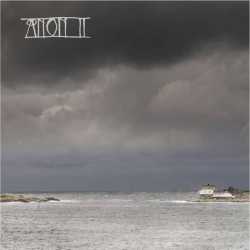
|
-
As the title gives away, Anon II is the second album that Norwegian fiddle-player Ånon Egeland has put out under his own name. The first was released over twenty years so it's probably about time, and in fact this is his first purely solo album, the previous one having musical support from two other musicians. Egeland is from the Agder region, to the south of Norway, which stretches down to the country's southern coast. Anon II features both the regular four-string fiddle and the Hardanger variety with its underlying sympathetic strings and both types have long been played in Agder, though the Hardanger fiddle tends to be heard more in the areas where Agder borders with Telemark and with whom some of its tunes are shared.
Listen to some tunes and read Mike Adcok's review.
|
Music of the Month
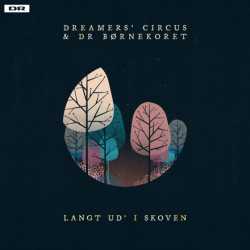
|
-
Langt Ud' I Skoven slipped under the radar, even for many of the band's fans. Here is Dreamers' Circus (with a few friends), plus a Danish children's choir, performing largely traditional songs for children – a interesting subset of Danish folk. It's not something that's been slapped together for an album and performance; there's plenty of time and imagination gone into the arrangements, and everything soars with the trio's usual sense of melody.
Chris Nickson reviews.
|
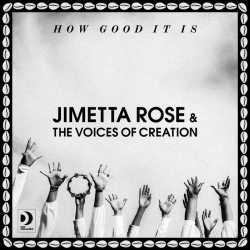
|
-
Rose Jimetta is a native of Los Angeles and is part of the independent music scene there. She, like many jazz performers, uses R&B, Hip-Hop and choral jazz to make her distinctive sound. Parts of this album channel Charles Mingus; think "Wednesday Night Prayer Meeting." Raised in church and choir from birth, the soul-jazz singer easily conjures the sound of gospel music and then enhances it with other genres. With her ensemble Voices of Creation, she channels gospel, jazz and praises God and the gods of music like Sun Ra, Coltane and Rahsaan Roland Kirk.
Have your spirit lifted as you listen to the music and read Lisa Sahulka's review.
|
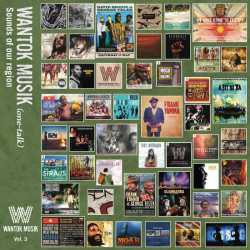
|
-
Wantok Music Vol. 3 opens with a song from Torba Province in Vanuatu, north-east of Australia. It tells of how, in the late nineteenth century, a white man arrived there bearing gifts as a way of enticing the local people to trade with him. Subsequently, having continued to raise his prices to a level they were unable to afford, he persuaded them to grant him some land, where he then set up a trading center to make the local people dependent on him. The fact that the song, by Father Levi Sandy, is delivered unaccompanied helps to give it a timeless quality, but unfortunately that's not the case with the majority of tracks on the album which, through their arrangement and production, have an overtly modern sheen to them, which already makes them sound rather dated, at times.
Read the pros and cons of the label's approach in Mike Adcock's review, which includes a few songs and videos.
|
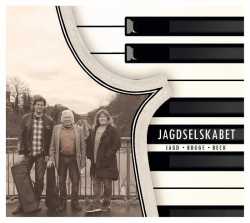
|
-
Jagdselskabet is one for those who delight in hardcore instrumental Danish folk music. The trio of violinists Krtistian Bugge and Steen Jagd, and pianist Malene Beck, used to play together regularly, and recently began collaborating for dances again, performing traditional music and for this album, Jagd's compositions. His music is certainly inspired by the tradition, and it's very much music for dancing, even with the delightfully quirky touches that pepper tracks.
Listen and maybe even dance a kvadrille or a vals, as you read Chris Nickson's review.
|
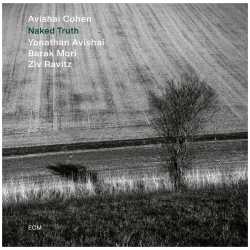
|
-
Avishai Cohen, the trumpeter from Tel Aviv and now New York based, takes the work of Miles Davis in a parallel but similar direction. Miles Davis wanted crowds and more accessible music but always at the core he was interpreting emotions. Cohen is doing the same thing in reverse, using his trumpet to express emotion in a way less accessible, but more stream of consciousness, dream state. When Davis went into the studio, the space he gave his musicians to improvise was legendary. In a similar way, Cohen has brought musicians together to improvise emotions. The songs are simply "Part 1," "Part 2," and so on. We get more information in the last tune, which is a spoken word composition. In this space, it is interesting to think where Davis might have gone if he did not head towards fusion, and intriguing to think what Cohen is doing in this improvisational, dream-like space. It is haunting and so personal.
Lisa Sahulka listens in.
|

|
-
You could come to this album simply intrigued as to how a Barcelona born, Paris educated jazz violinist might interpret the classic song "My Favorite Things." John Coltrane famously took the composition composed in 1959 by Rodgers and Hammerstein to a completely different place just a few years later in 1961 and defined what modern music was, or could be. Coloma Bertran takes "My Favorite Things" apart into nine additional compositions on the album Principis (Principles) with flavors of the original... Bertran lives in Barcelona, where the native language is Catalan, which gives the title track, "Principis" a double meaning. In an email exchange, she says it is "one of the main themes of the album, which I wrote to remind me where I come from and what my principles and values are." The title tune begins with a lone violin, then drums and then it explodes into a joyous romp. Her take on the jazz violin is also interesting; an instrument that is relatively rare in jazz, she makes it the center of attention.
Lisa Sahulka reviews this unique album.
|
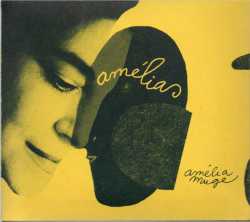

|
-
Amélia Muge first appeared on my radar in a 1998 recording of romanciero, a style of narrative poem that was popular on the Iberian peninsula in the 15th and 16th centuries. Novas Vos Trago (Tradisom) featured a group I had already come to love, the energetic percussion, bagpipe and vocal group Gaiteiros de Lisboa, and she appeared on a few tracks with them. While she is often promoted as a fado singer, and sometimes fits well into the category, it is her unyielding interest in the ancient and how it can inform the new that has made her essential listening for me over the last two decades. She has flirted with pop music and some purist fado in that time, but Amélias brings her fully into her own, in an album completely focused on the voice, the lyric, the stories.
Hear more from this finely performed and beautifully illustrated recording, reviewed by your editor.
Amélias is our pick for Music of the Month for July, 2022.
Find out how you can subscribe monthly, or get the CD for a one-time donation.
|

|
-
Magalí Sare is a pianist, vocalist, flautist, percussionist, composer, arranger, lyricist, and more from Catalonia, with training in Western classical music and jazz; these elements combine to give a sophisticated and lyrical sound to Esponja (Sponge), Sare's second album released under her own name. Esponja is both alluring and infectious, made ever more captivating by the polished elasticity of Sare's voice. She adorns her gift with a palette of vocal accents, chirps and sighs for example, to illustrate her stories, confessions, her soul, further enhanced by toothsome lyrics and classy instrumentation. There's little here that is not immensely pleasing.
Carolina Amoruso soaks it all in.
|
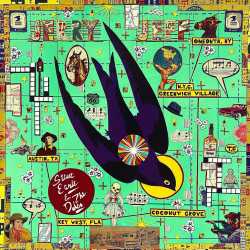
|
-
Jerry Jeff Walker, the late, great singer-songwriter, wasn't a Texan. That's a surprise in itself; his music seems organically entwined with the Lone Star state and it did become his home for many years, but he was born in New York state. Steve Earle, who was born in Texas but now ironically lives in New York, is an unabashed fan who worked with Walker back in the 1970s. Jerry Jeff is Earle's way of paying homage to a man who was a huge influence on him.
Read Chris Nickson's review and hear how Steve Earle and The Dukes pay tribute to the great songwriter.
|
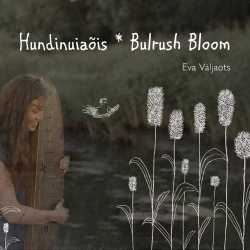
|
-
Estonian artist Eva Väljaots plays a variety of kannels, zithers with different sounds, strings and using different techniques, and her album Hundinuiaois - Bulrush Bloom taps into the essence of that delight in sound. Conceptually this series of pieces, all her own compositions, relate to aspects, and neighboring plants, of the bulrush (great reed mace), whose stiff brown sausage shaped flower-mass, atop a tall swaying stem, fragments as it matures, into a blizzard of white down that floats off in even the gentlest breath of breeze. Her simple, rather Moomin-like, line drawings of it and other plants in the CD booklet illustrate each track.
Andrew Cronshaw takes you deeper into the instrument and the music.
|
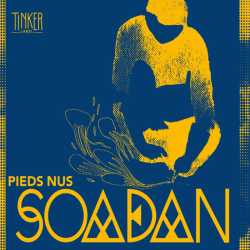
|
-
There is a depth to the music of Soadan that takes a minute to define. Pieds Nus isn't a day at the beach barefoot, minimal clothing and a band playing all day on the shore. It is an extended time in a place that is both familiar and exotic, joyful and serene; that experience of waking up from a distant dream to sunshine, waves and new places. Soadan is the trio of Gregory Audrain (vocals, guitar, bass), Armel Goupil (marimba, keyboards) and Jean Marie Lemasson (vocals, drums, percussion), all natives of Brittany in France but steeped in the roots of not only their own culture, but a wide range of music from far flung places in Africa, the Indian Ocean and South America.
Lisa Sahulka takes you on a trip inside this unique 'jazz' trio.
Lisa Sahulka takes you on a trip inside this unique 'jazz' trio.
|

|
-
A classically trained cellist, banjoist, singer, and songwriter, Leyla McCalla, born in New York of Haitian immigrant parents and activists is now based in New Orleans. Her work has drawn upon her Haitian heritage and many other influences. When Duke University acquired the archives of Radio Haiti (1957–2003), McCalla took on the challenge of reviewing and incorporating elements of that material into a multi-disciplinary theater project that became Breaking the Thermometer. She weaves Radio Haiti's humorous and provocative archival broadcasts, interviews, traditional Haitian tunes, and her original compositions into a varied and engaging reflection upon the cultural, social, and political struggles of latter 20th Century Haiti, and the effort to trace her personal trajectory in that dynamic context.
Read Michael Stone's review and hear some of the music.
|


|
-
There are bits of free jazz, sci-fi and a complicated mix of the African Diaspora in the music of Irreversible Entanglements' Open The Gates. The incendiary poetry that accompanies the music is beautiful in this context. Music is more powerful than the sword and this music is a tsunami of thoughts on justice and equity laced with various rhythms.
Shabaka Hutchings' new album Afrikan Culture fits well in this space, a most welcome addition to jazz and its continuing evolution. It melds Japanese wood instruments with the kora and mbira to an effect that isn't entirely expected.
Lisa Sahlka listens to two recent recordings that explore politics, jazz and new ideas.
|

|
-
On the second album from Anna Dantchev and her ensemble Dantchev:Domain, The Lions We Are, the Bulgarian singer who lives in Finland finds them exploring the theme of courage, a concept that's not always easy to define. Perhaps aptly, then, it's an album of surprising twists and turns in music, brimming over with ideas. That surfeit is evident on the very first track. "Goodbye" shifts quite abruptly from lament to a hyperspeed disco bassline, colored by deep brass that morphs into jazz. It's quite astonishing, and there's no doubt the musicians are exceptional, but the track, like the rest of the album, is very much an album of shadowed textures; plenty of darkness without the relief of light, only a few swirls of guitar and xylophone to offer occasional counterpoint.
Read Chris Nickson's review and hear some of the new music online.
|
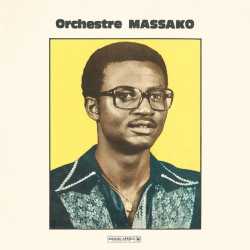
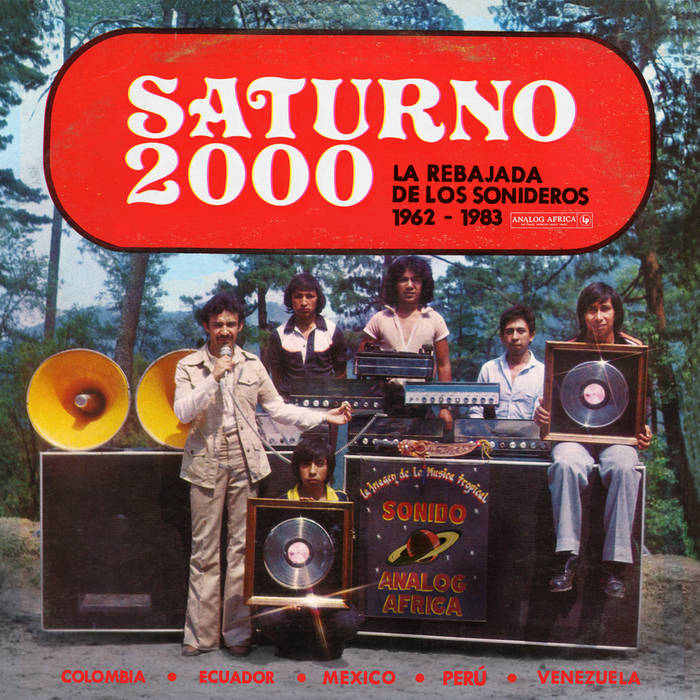
|
-
Orchestre Massako is an EP length 4-song collection that pays homage to late, prolific vocalist and songwriter, Jean-Christian Mboumba Mackaya aka Mack-Joss, a Gabonese musician who spearheaded this band from the late 1970s until their mid-1990s demise. Orchestre Massako, which was formed by members of Gabon's National Gendarmerie, eventually became Gabon's national orchestra and starting making records in Paris, where they were pressed and sold in Gabon. The band also came to include Amara Toure, a singer who had found fame in Senegal before moving first to Cameroun and then Gabon, where he joined Massako (you can hear him on two of this album's tracks). Musically, the sound here is polished but not slick, and like many West African bands of the time, owes some of its sound to music coming in from Cuba and elsewhere in the Caribbean African diaspora
Saturno 2000 is an odd release. The recordings come from Mexico City. Well, sort of. Essentially, this compilation is indirectly the result of records that were sold to sonideros- block party DJs in Mexico City. The art of Mexican DJ culture runs along a timeline roughly the same as the earliest hip hop parties in the Bronx or the heavy, dub-drenched toasting of sound system DJ. What they all had in common was creativity based on economic decisions where money was tight. Whereas hip-hop's origins or Jamaica's toasters rapped over manipulated vinyl, Mexican block parties thrived due to the invention of turntables with pitch control, meaning DJs could slow records down from 33 to 20 RPMs, a concept that came to be called rebajada, or "to lower or reduce." This collection's real inspiration comes from an accident at a Monterrey block party when a local sonidero's turntable connection overheated, causing the records to slow down. The next day he started receiving requests for mix tapes of the tracks at the slower speed and a movement was born as more and more people wanted recordings. So, while the music here is largely from Colombia, Peru, Ecuador, and Venezuela, it comes via purposeful and accidental tweaking much farther north. And it's astounding stuff, meant for a slow, hot summer day and a joint. Arguably, slowing the tracks down allows a listener to get inside the music. Truly, except on rare occasions where vocals appear, one would never know this music had been manipulated unless they were familiar with the original recording.
Bruce Miller delves into two very different brands of popular music, from Gabon and South America.
|
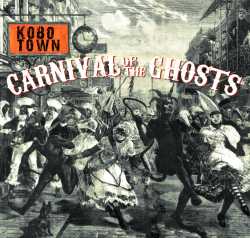

|
-
Singer-songwriter-multi-instrumentalist Drew Gonsalves is a native of Trinidad, transplanted as a teen to Canada. Inspired by the Kaiso tradition of such definitive purveyors of calypso as Neville Marcano "Growling Tiger" and Calypso Rose, Gonsalves pens most of Kobo Town's material. Carnival of the Ghosts delves more universally than its predecessors into the metaphysical vein. As Gonsalves relates in the album notes, "While much of my writing has been inspired by the history that has shaped the Caribbean and its diaspora, leaving its marks and scars in all our manners and doings, this album takes a wider look at our human conditionhere the lingering past is not just beneath the surface of the present, it is also something we are all quickly becoming part of."
Read Michael Stone's full review and hear some of the music.
Carnival of the Ghosts is our June, 2022 selection for Music of the Month. Read more about it and subscribe to our monthly CDs, or purchase this one for a donation to RootsWorld.
|
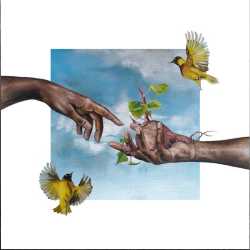
|
-
Nyokabi Kariũki gives us a highly personalized sound journey in peace places: kenyan memories. She takes us down a path through the sound images that haven't left her; rather they have been informed and transformed by her artistic growth, and by the vividness as well as the fickleness of memory. Hers is a twenty-first century African interpretation of the environment and its relationship to traditional music. She teases us gently with console-tweaked natural sounds and with electronic fabrications. We share with her an intimate passage, one in which we feel, at the same time, enclosed within her secrets.
Carolina Amoruso takes you to some of those secret places in her review. Listen.
|
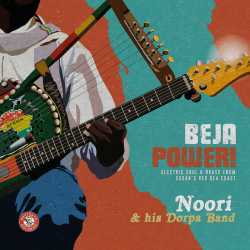
|
-
Any Westerner who's heard music of the Beja people, who live near Port Sudan, a city located on Sudan's Red Sea coast and responsible for perhaps 90% of Sudan's trade, discovered it via a 1995 CD release titled Rain in the Hills: Beja Ballads of Port Sudan. The album, released on the late John Storm Roberts' defunct label Original Music, featured solo oud laments as well as tunes played on the basankoob, a Beja lyre. This new Ostinato release may not be the first to reach western ears (as they claim), but Beja Power! Electric Soul & Brass from Sudan's Red Sea Coast gives this music the largest Western audience it's likely to have. It has also introduced a hybrid instrument, the tambo-guitar, a combination electric guitar and tambour (aka the basankoob). Also, the music on Beja Power! differs radically from the OM release as it's electric, vocal-free, and played by a band that includes hand drummers, a sax, a second guitar and bass. Noori, the tambo-guitarist, sails over the album's six tracks as his Dorpa Band rides subtle, breathtaking vamps.
Bruce Miller gives you the rest of the story.
|
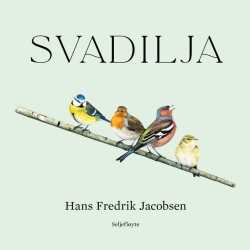
|
-
The seljeflřyte is a Norwegian flute made from willow and Hans Fredrik Jacobsen reckons his latest album Svadilja is the first ever to solely feature the instrument in its traditional form. Jacobsen prefers to make his own flutes, in the traditional way. "One of the things I love doing most is whittling a willow pipe. This is something I do every spring, when nature is awakening with new life, colors are appearing, sap is rising in the trees, birds are singing and the world is a better place." Svadilja is a collection of solo pieces he chose to record in the open air, in a forest not too far from Oslo.
Mike Adcock reviews, and Hans Fredrick will show you how to make your own seljeflřyte.
|

|
-
Those of us who listen to music constantly, particularly jazz, wait for the next burst of creativity that further defines the music. Jazz has been influenced by so many genres, including the African diaspora, Latin music and now every other form of music. It leads to the question: "Is this jazz?" Enter Maga Bo and his new album Amor (É Revoluçăo), which recently stopped me in my tracks one morning while listening to WPKN radio. Maga Bo is an American-born music producer who has spent many years living in Brazil and mixing indigenous Brazilian roots music with 21st Century production and an amalgamation of various music forms... On Amor (É Revoluçăo), his music is channeled in a glorious salute to Brazil, conjuring earth and spirit.
Read Lisa Sahulka's review of the album and hear (and see) some of the music.
|

|
-
Long Term Parking is made up of the Czech trio of Christineck (aka Michal Krystýnek of the band Ponk), Kolib (aka Libor Koutník), and Pavel Bríza. Their first album Luxury Luxury is dark material. At this uncomfortable moment in time, something ecstatic just sounds wrong to my ears. A bit of keening anxiety is in order, along with spoken word droning, some catchy hooks to keep humming to and a bit of experimental sound atmospherics mixed with strings to get to the heart of the zeitgeist. We are (perhaps) coming out of the covid pandemic and into who-knows- what.
The album is made up of songs laying bare moral struggles of the mind in the face of technological intrusions, and the collapse of self-identity and agency within the internet age. It's heady, deep listening stuff. Luxury Luxury has a message, delivered via elaborate lyric imagery and sonic textures.
Join Martha Willette Lewis and explore a different take on Luxury.
|
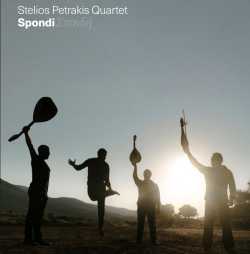
|
-
Stelios Petrakis is top of the tree among Cretan musicians and instrument makers. He's particularly known as a leading player and maker of Cretan lyras, including the lyra with sympathetic strings that he and Ross Daly developed, but he's also master, and luthier, of laouto and saz, and here he brings in a new development of his, a bass lyra he calls 'Cretan cello.' This is a beautiful, richly textured, dazzlingly played album, of mostly his own compositions which, like his instruments, embrace and expand on the finest and subtlest parts of Cretan tradition, in instrumentals and songs with lyrics traditional or by his brother Yannis Petrakis.
His quartet consists of himself on the aforementioned instruments, with Dimitris Sideris (laouto and vocals), Michalis Kontaxakis (mandolin) and dancer Nikos Lembesis. For this album they're joined on some tracks by singer Vasilis Stavrakákis, great Iranian percussionist Bijan Chemirani on zarb, daff and bendir, Charalambos Paraskakis on askomandoura (Cretan bagpipe), and Valencian musician and recording engineer Efrén López on pandero. His latest recording is titled Spondi.
Read Andrew Cronshaw's review of Spondi and listen to some music.
|

|
-
The mere concept of a bunch of white folks from the states or Europe deciding it would be a great idea to collaborate with the Black musicians who inspired them is worrisome. From white-boy "blues" musicians such as Clapton playing with Howlin' Wolf to Jon Spencer's party record with RL Burnside, these collabs might have helped the aging bluesmen gain a larger audience, but they couldn't help but come off as patronizing... There's no escaping the dilemmas this inequality places on such pairings. Globally, there was the well-intentioned but problematic Real World Records run by Peter Gabriel, which, while introducing African musicians to the west, also seemed to sonically flatten what many of them had on offer, suggesting western production values were somehow more palatable.
But sometimes we simply hear something and like it, finding familiarity and letting the influences wash over us. And that's precisely what happened when Belgium's Crammed Discs started releasing records in the West by raw, Congolese tradi-modern, electric ensembles who jacked their instruments into homemade-out-of-necessity amplification for a sound teetering on punk-rock sensibilities... What sets Congotronics International apart from the troubling white/Black collabs of the past is that Western artists featured here- Deerhoof, Juana Molina, Skeletons, Wildbirds & Peacedrums aren't enlisted by the label to give Konono #1, who reunited for these sessions, or Kasai All-Stars any larger audience. Instead, they're here to work their way into the Congolese bands' tonal and rhythmic spaces out of sheer love. As a result, Where's the One? truly feels like a more global celebration...
Listen along while Bruce Miller gets deep inside this unusually successful collaboration.
|

|
-
Meneet, the long-awaited follow-up to Maija Kauhanen's remarkable 2017 solo debut, Raivopyörä, might well be even more satisfying that its predecessor. No other musicians this time around, it's simply her on various kanteles, both natural and prepared, along with all the voices and percussion, including "stuff from flea markets." Working alone is demanding, but Kauhanen has been careful and precise with the arrangements, yet still allowing space to work up a real fire. That's most apparent on the deviliish "Käärme" ("Snake") where she spits out the words like venom over the heavy bassline from the kantele, and a rising crescendo of instruments, erupting in a snake charm chant that pulls from several historical texts. The evil slithers along, insidious, dangerous and deadly, and the track becomes a musical battle.
Who wins? Well, you'll just have to listen and read Chris Nickson's review to find out.
|
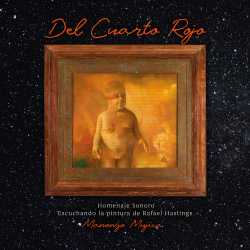
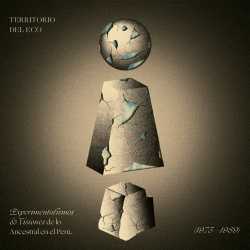
|
-
Percussionist Manongo Mujica, who began playing in Peruvian rock bands in 1970, went on to fuse jazz with the country's roots-based music in the 1980s, has composed, improvised, and collaborated with the likes of Acid Mothers Temple and Richard Pinhas. In 2020, he received the news that his dear friend of nearly 50 years, visual artist Rafael Hastings, had died, prompting the musical travels on Del Cuarto Rojo, as he tried to detail their friendship in sound. The results are evocative, touching, and sadly beautiful.
Territorio del Eco compiles key Peruvian musicians who were at the forefront of the country's sonic innovations during the second half of the 20th Century. The focus here is on players who meshed the country's Andean traditions into some truly far-reaching explorations.
Read Bruce Miller's reviews of these two recordings and listen.
|

|
-
Unsurprisingly, even a global pandemic could not keep Oumou Sangaré from expressing her musical heart and soul. Visiting the U.S. in 2020 from Mali, Sangaré got caught in the covid-19 lockdown and decided to stay put in Baltimore, where she bought a house, and started to write and record songs for her latest album. From across the Atlantic, Sangaré sings words of praise and caution to folks back home in Mali, particularly its women. For Timbuktu, Sangaré teams again with Mamadou Sidibé, an old friend and her accompanist on the kamele n'goni African lute. But on this new album, she has an inspired partnership with Pascal Danaë, a Paris-based guitarist and leader of the band Delgres, where he unites his Guadalupe roots and gritty electric blues. Danaë fits perfectly into the Malian electric-acoustic hybrid blues sound, contrasting nicely against the dry twang of the n'goni... Throughout, Sangaré's voice is a celebratory delight – silk and smoke, honey with a bit of grit, powerful and lithe.
Read Marty Lipp's review, watch 2 videos, and listen to some of the music.
|
Music of the Month
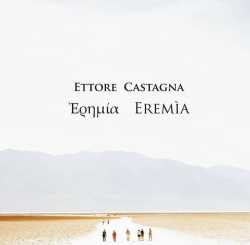
|
-
Calabria is home to composer/musician Ettore Castagna. It's a place that's been buffeted by influences from all around the Mediterranean over many centuries. You can hear strong hints of that history in the music here; bits of Greece and North Africa, along with that dry, dusty sound that typifies the entire south of Italy. It makes for a heady rhythmic and often hypnotic combination, one that multi-instrumentalist Castagna gleefully explores. Ereměa started life as a completely solo project, just Castagna's voice and playing, but quickly grew far beyond that, as he brought in musicians and instruments from around the world to add their own colors and textures to the material. Yet, for all the guests, the core of the sound remains constant to Castagna's original vision.
Come listen and read Chris Nickson's review.
|
Andrew Cronshaw finds it full of memorable material, beautifully arranged and played.
|
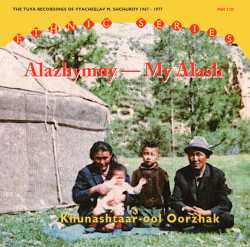
|
-
Alazhymny (My Alash) is a newly released collection of Tuvan recordings made by Vyacheslav M. Shchurov between 1967 and 1977 focused on the singing of Khunashtaar-ool Oorzhak. It includes field recordings made on the high mountain pastures of Aldan-Maadyr in the Chöön-Khemchik region in 1967, others recorded for Moscow Radio in 1977, and some from a private collection.
Andrew Cronshaw writes, "Khunashtaar-ool Oorzhak was the first Tuvan throat-singer I ever heard, sometime around 1980 I think. It was an astonishing sound, and I couldn't have started with a better practitioner. It was a track recorded for Moscow radio back when Tuvan khöömei, known as throat-singing but really made with the vocal cords and mouth, was only just beginning to be heard outside the southern Siberian republic of Tuva. He was doing a sygyt, one of the particularly striking and iconic split-voice forms of khöömei that have a whistling melody made with harmonics over a deep growling drone."
Read more about this important set of recordings and hear some of the music in Andrew's full review.
|
Music of the Month

|
-
The (former) French colonials will not let their history rest, and they've been known to express their rancor through art. Both their literature and music have proven incisive, serving as vehicles of agitation against the dehumanization and abuses of French rule. Writer, polemicist and psychiatrist, Frantz Fanon, as well as his mentor Aimé Césaire, and writer Patrick Chamoiseau, are part of a cadre of musicians and intellectuals from the French Caribbean, and from the Maghreb as well as Sub-Saharan Africa, who have contributed to the truthtelling of the history of colonialism and neo-colonialism.
On Insula, Martinican jazz pianist Maher Beauroy pays homage to Fanon, featuring salient excepts from his writings, most notably the iconic "Black Skin, White Masks" (1952) and "The Wretched of the Earth" (1961). The selections are read by Florence Baudin, and Beauroy has amassed a diverse assemblage percussion instruments, oud, mandolin, flute, violins, cello, acoustic bass (the emerging Martinican standout, Sélčne Saint-Aimé) and vocals. Each tune is a voyage, with straight-ahead jazz at the helm, undulating through musical idioms mostly as if by sea, informed by Caribbean rhythms and by passages through the Maghreb as well. Rather than mimic the argument and accusations of Fanon's text in the narrative of Beauroy's music, Insula is a free standing companion to Fanon, one that gives the listener room to contemplate, and to enjoy the music in its own right.
Read Carolina Amoruso's article on the music of Maher Beauroy, and the texts of the writer who inspired his new work, Frantz Fanon.
|
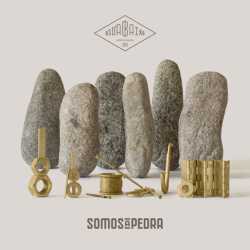
|
-
Galicia, in north-west Spain, is honored with skilled musicians strongly rooted in its living tradition, and they're making ever-diversifying music, embracing ideas and approaches from present-day musics and bending them to the Galician way. A prime example is the band Os d'Abaixo, formed in 2010 to play for dances and fiestas in Santiago de Compostela. Its name translates from Galego to English as 'those from below,' or – given that its members are often to be found in the excellent gigs and sessions downstairs in Compostela's roots-music hub Casa Das Crechas - those from downstairs.
For their new release, Somos A Pedra, the six-piece ensemble comprises Quim Farinha (fiddle), Gom Goás (guitar), Santi Cribeiro (accordion - he and Farinha were both members of well-known Galician band Berrogüetto), Richi Marín (percussion), and Roberto Rama (who was in another influential band, Fía na Roca) and Xacobe Varela on Galician gaitas, bouzouki, sax, and pandereta. Varela takes lead vocals, and on this third album there are other vocal leads from guests Eliseo Parra and Portuguese singer María Joăo.


|
-
Terje Isungset is a Norwegian percussionist who has long explored the sound-making potential to be found in the natural materials of his homeland, whether it be birch wood, lumps of granite, slate or, as we find here, ice. Over twenty ago years ago he began staging an annual ice music festival each February in Norway, and Glacial Poetry is his ninth Ice Music album. For these recordings and for live performances of his ice music, Isungset insists on using natural ice - tap water just doesn't sound right – and this latest recording was made in a specially built igloo high in the mountains over one winter.
Read Mike Adcock's review and listen.
Terje Isungset's work with ice recognizes and draws attention to the endangered fragility of the medium. Stefan Östersjö and Mats Edén are creating music from the other end of the process on Wind, water, strings, bow. We learn from the accompanying booklet that Vombsjön, a lake in southern Sweden, was formed (albeit 14,000 years ago) from the melting of glaciers, but now of course that process is accelerating rapidly. Fiddler player Edén and guitarist Östersjö place the emphasis on free improvisation in partnership with sounds from the natural world. They recorded next to the Vombsjön, and the instrumentation might be thought of as a deconstruction of a jazz quartet format: two front players and a rhythm section. The latter is provided here by the sound of water lapping on the shore along with wind roaring through the strings of a specially adapted guitar suspended from a tree, a contemporary take on an aeolian harp.
Stand on the shore and listen while you read Mike Adcock's review.
|

|
-
In the ancient world, Babylon was a happening place. Founded some 4,000 years ago in Mesopotamia, between the Tigris and the Euphrates Rivers, it was a sprawling, multicultural metropolis where art, science, music, mathematics, astronomy, and literature flourished. But for the Abrahamic faiths, Babylon represents worldliness and sensual excess, oppression, and evil... That Babylon is not what Antonio Castrignanň had in mind when he titled his latest release Babilonia. For Castrignanň, a singer, percussionist, and composer from Salento, the southern part of Italy's Puglia region, the Mesopotamian capital is a metaphor for "a collective journey outside the Salento borders to discover different languages and cultures." Salento is the point of departure (and return), but Castrignanó's Babilonia reaches Sub-Saharan Africa, Turkey, the Balkans, and the Middle East. Babilonia comprises ten new compositions performed by Castrignanň and an ensemble of Italian and non-Italian musicians... Castrignanň has created a personal style rooted in traditional Salentine music, and not only pizzica but also work songs and love ballads. He's been immersed in it since his childhood in Galatina, once a center of tarantismo.
George De Stefano reviews an album that "takes the listener on a voyage on which every stop offers pleasure, surprise, excitement, and often stunning beauty. It's Antonio Castrignanň's masterpiece and a highwater mark in contemporary Salentine music."
|
Music of the Month

|
-
Olav Luksengard Mjelva is a Norwegian fiddler whose second album Hugnad features almost exclusively his own compositions. The CD comes with a booklet illustrated with color photographs and containing short notes in Norwegian and English on each of the tracks. Mjelva is from Roros in the east of Norway, close to the Swedish border, an area known for its standard fiddle tradition. However, following in the footsteps of celebrated fiddle-player and authority on Norwegian folk music Sven Nyhus, who also came from there, Mjelva has embraced styles from a wider area of the country, playing both standard fiddle and the Hardanger variety with its added sympathetic under strings.
Mike Adcock takes you through some of the albums tracks.
|
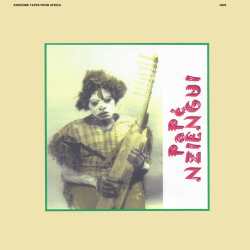

|
-
The Mtsogo and Punu forest-dwelling tribes of Gabon have practiced Bwiti, a religious practice involving psychedelic root bark ingestion, for hundreds of years or longer. And like many rituals around the planet, music plays a role. In the case of these Gabonese tribes, the mungongo (mouth bow) and ngombi (harp) play a central role in Bwiti ritual. As participants surrender to a psychoactive state, the ngombi can often be plucked at a manic pace, inducing hallucinations. Ngombi master Papé Nziengui mixed ritual with commerce when he released Kadi Yombo in 1989. Here, on tracks such as "Ngonde," furious harp and mouth bow accompany Nziengui's lead vocal, which is answered by a female chorus. This is the vocal approach on much this album, and as such, represents aspects of Bwiti performance. "Ngonde" is representative of the second half of this LP, which focuses on the traditional instruments and vocals and comes as something of a surprise after the first half of this album... where you will hear the ngomi engulfed by drum machines, electric bass throb, and synths, rendering the ceremonial as dance floor pulse. The blend works well, connecting straight to the club, which has its own rituals of surrender, drug use, and movement as interconnected slices of a collective experience.
Read Bruce Miller's review and listen to some of the music
This album is a RootsWorld Music of the Month selection. You can subscribe or make a one time donation and receive this CD as our thank you.
The CDs were donated by the artist and the label, Awesome Tapes from Africa. I thank them, and YOU, for supporting RootsWorld.
Subscribe, donate and support RootsWorld
|

|
-
Tone of Voice Orchestra is a 10 piece group out of Copenhagen, and includes a cittern, bagpipes, drums, double bass, flutes sax, hurdy-gurdy, fiddle and four singers. Martha Willette Lewis writes, "I must confess I was not immediately taken with this album. On my initial listen I found the vocals too redolent of the Mammas and the Papas or the 5th Dimension. And there was flute. It was too upbeat as well. I have ingrained and strong opinions, that in this case got in my way. And then I really listened. Once I got over myself and my curmudgeonly biases, I found a jazz-inflected musical gem full of sparkle and some truly fine music. The stand-up bass and fiddle with the sax really do it for me. I felt really good listening to this. I fell for all of the instrumental parts, and the lyrics are whip smart, witty and surprising. The songs reflect on stereotypes, daily life, bittersweet love and it's clearly and strongly voiced from a female perspective."
Read Martha's full review and hear a number of songs from this surprising new album.
|
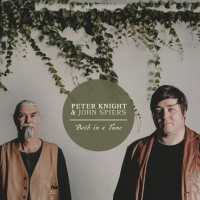
|
-
Peter Knight & John Spiers are Both In A Tune on the second album from this venerable duo of fiddle and accordion, and shows that the art of deep listening is very much alive and well in music. Yes, it's a folk album of sorts, but one which explores and reimagines traditional tunes, making them into something quite new and often daring. There's also a strong sprinkling of original music, filled with delicate and sometimes breathless improvisation.
Chris Nickson reviews an album he finds beautifully performed and thought out.
|
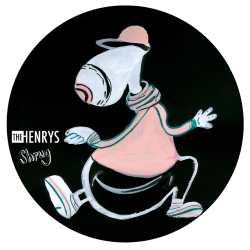
|
-
The Henrys are one of those curious little Canadian enigmas. They periodically emerging with new albums containing staggeringly good, inventive music, maybe playing a show or two, then vanishing back into Toronto like northern ninjas. They're one of those bands where 'if you know, you know' is true, and if you don't, well, you really should... Shrug sees a small change, with leader/guitarist Don Rooke now handling most of the vocals, helped by Maggie Keogh, over one of the tautest rhythm sections in music, plus occasional guests. But everything remains honed, sharp, and ready to entertain and sometimes confound.
Read Chris Nickson's review and listen to some songs.
|
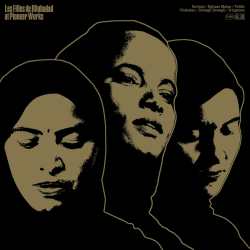
|
-
Whether through brawny assertiveness or by embellishing happenstance, we are now being gifted by more and first-rate access to what women have to say and how they choose to say it in music. While working recently on a review, I had a mini-revelation: I had inadvertently (or maybe not) filed my last ten or so articles for RootsWorld top-loaded with the efforts of women from around the world who have been pivotal in elbowing men from their ages-old monopoly over the artistry, center stage, and business of music, arguably the most influential of all of the arts. These women boast supreme and engaging musicianship, as well as growing savvy independent of and with equal agency as men.
Read about how Sofia Rei, Siti Muharam, Les Filles de Illighadad, Amparo Sanchez, Ladama and Luedji Luna are changing the musical landscapes of the world in Carolina Amoruso's article,
I will show you what a woman can do.
|
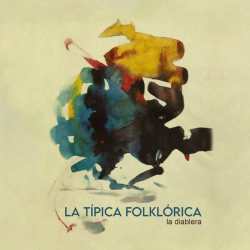
|
-
Passionately soaring, thrilling, slithering violins, rolling piano, surging bandoneón, double bass, in lurching, hesitating rhythms - the sounds associated with tango. And indeed this is the traditional formation of a tango orchestra, an 'orquesta típica'. But only one of the fifteen tracks on La Típica Folklórica's La Diablera is an actual tango. All the rest are the zambas, cuecas, chacareras, escondido, rasguido doble and bailecito of rural Argentinian dance and song music, arranged for the orquesta típica line-up. The melodies, and the four songs, are from the repertoires of a variety of Argentinian musicians and groups... The Argentinian founder, leader and arranger of this Paris-based ensemble, Alfonso Pacin, plays guitar, violin and bombo, and is a sensitive, light-voiced singer, while the other musicians and guests are an international mix.
Read more about this unique ensemble in Andrew Cronshaw's review.
|

|
-
Janus, the latest album from Norwegian Hardanger fiddle-player Annbjřrg Lien, sets off in fine style with a rousing original tune called "Amazon." It's written in the gangar dance tune tradition of Setesdal, not where Lien is from but whose music she has long turned to for inspiration. It starts with just fiddle and what sounds like a bass drum keeping the pulse, rather than the customary stamped foot. Second time through the tune she is joined by a few of of the collection of eight musicians backing her on the album, who together help to propel the piece's great rhythmic drive. So it comes as quite a surprise, as early as the second track, to find ourselves in a quite different sound world. "The Clock Is Ticking" is another original, this time a song delivered by Lien in English. It has a gentle bluesy gospel feel with harmonica and slide guitar predominating instrumentally, both provided by Knut Reiersrud. The Hardanger fiddle isn't heard until it takes the instrumental break, but it then suffers from being rather crowded out by the other things going on, an ominous indicator of what is to come.
Read Mike Adcock's review and listen.
|
Music of the Month
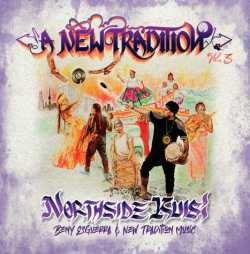
|
-
Beny Esguerra has an amazing story. Born in Bogota, Colombia surrounded by music, his family had to flee to Canada when his parents' work as activists and educators placed them in danger of being disappeared by the country's then-repressive government. Since then he has been a teacher, worked with a roving music studio and won a few awards. He raps, deals in spoken word, and mixes indigenous South American sounds with just about anything else you can name. On Northside Kuisi he continues to mix Colombian instrumentation such as gourds, accordion, hand drums, or Guacharaca with hip hop, Congolese rhythms, recorded speeches, horn riffs, and metallic guitar for music that focuses on North and South American Unity. In the process, both musically and lyrically, he eradicates borders. He ends up with a near-perfect gumbo of the entire hemisphere, all of it coming off as a natural extension of his own experience. Read Bruce Miller's review and listen to some of the music.
|

|
-
Polish singer Karolina Cicha has, over the last decade or so and several of her albums, been exploring the music of Poland's minorities, making arrangements and singing in their languages. Karaimska Mapa Muzyczna (Karaim Music Map) is a 2 CD project focuses on the songs of a very small minority, the Karaim people. Their history is complicated and their exact origins are the subject of dispute, but they are historically of the Jewish faith, but with differences from mainstream Judaism, and they live mainly in Crimea, Lithuania, Ukraine and Poland... Their language, which is of the Turkic group with Hebrew influences, is spoken by only a few dozen today, mainly in the town of Trakai in Lithuania.
On disc 1 Cicha sings, in the Karaim language, some of the same songs and more, in arrangements by her and the three musicians of her group Spólka (Company) using her accordion and keyboards and the band's instrumentation that includes kemanche, fiddle, cymbaly (hammered dulcimer), saz, oud, kantele and percussion... Disc 2 is twelve tracks from eight Karaim singers, unaccompanied solo or in duet. They're fine singers, male and female, most of them from Trakai, who are involved in the encouragement of Karaim music and culture. Many of the songs come from the Crimean Karaim tradition.
Read Andrew Cronshaw's review and find links to all the music and the actual interactive 'map' that takes you though it all.
|
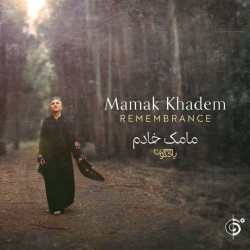

|
-
Remembrance begins with the sound of a high lonesome harmonica, more in the sonic image of the American west than one might expect from Iranian-born artist Mamak Khadem. But then the rhythm section slides in under keyboards and the words of 13th Century Persian poet Saadi Shirazi come slowly to your ear. Khadem writes that Remembrance is "a musical journey to remembrance, healing the huge loss of my beloved father, Mohsen Khadem... Being unable to be by his side was profoundly difficult, yet for so many immigrants in our world, life itself is like an infinity of limitations." In these eight songs, written during the pandemic, isolated from family, the words of poets ancient and modern are brought to life in an album of rich, droning music and a voice filled with both pain and hope... Each song on the album is its own highway, each path feeling different underfoot...
Read the editor's review.
I am pleased to present this album as our selection for Music of the Month for March, 2022. These recordings are donated by the artist and labels to help you support RootsWorld with your contribution of 20.00 a month, or a one-time purchase of 22.00. I want to thank Mamak Khadem and Six Degrees Records for helping me bribe you to help RootsWorld.
Find out how you can subscribe and support us.
|
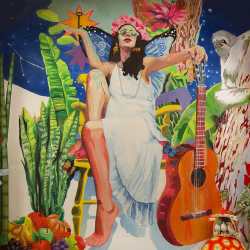
|
-
In a pop landscape populated with singers who wield the kind of gob-smacking, roof-raising voices celebrated by TV shows like "The Voice," Brazil's Marisa Monte is a voice apart. On her latest, Portas, Monte more than ever leans into creating music of quiet beauty – a pop star who declines to be ear-popping. Her latest album shows her in gentle mode – more bossa nova sweet sophistication than street party samba. While the album ends with several vivid, upbeat songs, the album seems to be Monte's balm for a Brazil and world that has been wracked by the Covid pandemic... For her first solo album in 10 years, Monte returns to form, but in an unexpectedly quiet way.
Read Marty Lipp's review and listen to some songs.
|

|
-
Traditionally the province of men, a young woman from a semi-nomadic scrubland village in Niger, Fatou Seidi Ghali, had the temerity to steal away with a cousin's electric guitar and taught herself to play. Ghali has become the first professional female guitarist amongst the Tuareg. With Alamnou Akrouni and Amaria Hamadalher, Ghali formed Les Filles de Illighadad (The Daughters of Illighadad, their native village), in 2017, the first female Tuareg band. A cousin of Ghali, Abdoulaye Madassane, plays more or less rhythm guitar, but his key role is to negotiate for the women in situations where they may not, and to act as their de facto chaperone.
Carolina Amoruso delves into the Tuareg women's music called Tendé.
|
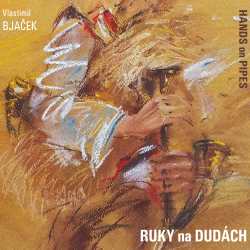
|
-
Ruky na Dudách offers a thrilling mass of grainy instruments and strong vocals, in music of the Moravian-Silesian Beskyd mountains in eastern Czechia (the Czech Republic). Bagpipe, fiddles, kontra (rhythm viola), koncovka, hammered dulcimer, trúba (long wooden Carpathian trumpet), high-pitched pistalka (wooden whistle), various gutsy folk percussion instruments and more, are joined by wild full-voiced male and female singing. It's music full of the energy and spirit of village tradition, but these aren't field recordings; they're tracks, new and from previous releases, featuring bagpiper Vlastimil Bjacek in arrangements by his longtime colleague, musician, ethnomusicologist and producer Marian Freidl.
Andrew Cronshaw offers a full review, plus a little tutorial on the Lydian mode.
|
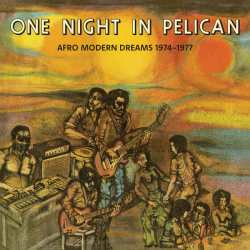
|
-
As UK-based Matsuli continues its journey to unearth music from South Africa's 1970's-era funk, jazz, and disco hybrids, One Night in Pelican serves as both primer for and extension of what we know about Soweto's fertile scene. As it turns out, the Pelican, a venue that opened in 1973, located in an industrial park near railways and warehouses, and run by bootlegger Lucky Michaels, was Soweto's first club. As such, it had its own house bands as well as a VIP-section full of the city's cross section of celebrities and hot shot musicians. And while the Pelican's weekend sounds focused on top 20 hits, the rest of the week was open for jamming, which is where this collection comes in.
Bruce Miller listens to the late night sounds of Soweto.
|
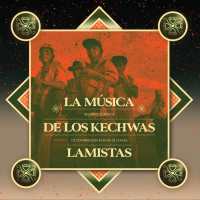
|
-
Lima, Peru-based Buh Records has been releasing reminders of the massive, multi-cultural, geographically astounding South American country's vast experimental music scene for the better part of the last 20 years, unearthing treasures of the country's music beyond more well-known Amazonian Chicha or coastal Afro-Latin rhythms. Buh has exposed a country that has boundless experimentation on par with anything from Europe or the states. So, it only makes sense that they have decided to release two collections of more foundational tracks from the rainforest or rainforest-adjacent areas of the country. Around the Humisha focuses on ensembles from the country's vast Amazon region. However, what they show are musical forms that had long ago hybridized to included sounds from the coasts, the mountains, as well as the Amazon, which means to hear whatever Peruvian Amazonian "traditional" music is to hear a stew of the country's vast assortment of instruments and rhythms... The music of the Lamista Kechwas focuses on a single ensemble, the elderly Los Abuelos del Wayku, who are from a region of Northern Peru where mountains, jungle, and wide valleys converge. Everything in this collection was recorded between 2017 and 2020 by Percy Alexander Flores Navarro and shows off the most hardcore indigenous music from this Quechua-speaking area.
Bruce Miller delves into two albums of the living tradition of Peru.
|
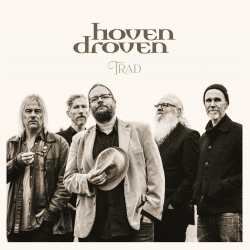
|
-
A simple electric guitar pattern, over which the fiddle plays a phrase, develops as it repeats. Then in with the full band, big chunks growing into a huge loping riff and screaming guitar, before subsiding to the opening fiddle phrase and guitar pattern.
It is a satisfying opening to the first album in a long time from one of the leaders of Sweden's folk-rock phase of the 1990s. Trad is a full-blooded, energizing and very welcome return for Hoven Droven, up there with their finest.
Read Andrew Cronshaw's review and listen to the music.
|
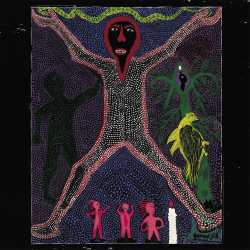
|
-
Bonga Jean-Baptiste, a Haitian-born master vodou drummer now living in New York City has been performing and teaching children rhythm in an attempt to make sure the music's practice lives on. Boula shows the drummer, singer, and Houngan (priest) exploring rhythms he learned as he traveled his home country as a young man. The record allows snapshots of the various regional rhythms, as well as lyrical themes shaped as songs. What they can't possibly capture is the experience one gets from a vodou ceremony; instead, they showcase Jean-Baptiste's vast knowledge of this music and offer an authentic recording of a centuries-old tradition.
Read Bruce Miller's review and listen.
|
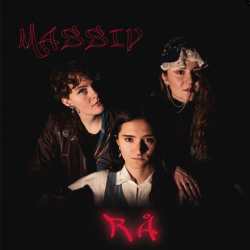
|
-
The trio Rĺ plays traditional Swedish music (except for one track), but quite honestly, it's unlike any take on the past you've heard. This is the lumpity-bumpity version, a gleeful rise through it all by a trio using violins, saxophones, and clarinets. Not your standard line-up, but there's nothing standard about Massiv.
Read Chris Nickson's review and listen to a few of those bumpity tunes.
|
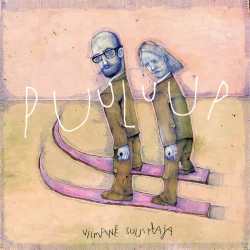
|
-
Two Estonians appear in dark suits and white shirts without ties. One looks like a doctor or lawyer, the other a renegade rocker. But it's what's in their hands that completes the picture and makes it unusual: each has a hiiu-kannel, the Estonian variant of the Baltic bowed lyre, close kin to Finland's jouhikko and also known as talharpa, tagelharpa or in Swedish strĺkharpa. The duo - Ramo Teder (hiiu-kannel, vocal, looper, effects) and Marko Veisson (hiiu-kannel, vocal, effects) - are cunningly, palindromically named Puuluup. 'Puu' is Estonian and Finnish for tree or wood, and 'luup' is a fortuitous re-spelling of the English loop. Those two hiiu-kannels, looped and processed, provide the source of all of Puuluup's instrumentation. Their second album - Viimane Suusataja - offers danceable grooves in songs with surreal lyrics, wittily presented.
Listen in and read Andrew Cronshaw's review.
|

|
-
Hazama is the second album from Mitsune, a Berlin-based band featuring an all-female trio of shamisen players who also provide the vocals, supported by double bass and percussion. Whilst it has its roots firmly in Japanese traditional music, Hazama presents a decidedly modern take on that tradition, not in its technology - the instrumentation is purely acoustic - but in its brazen eclecticism. The band members hail from Japan, Germany, Australia and Greece and that is reflected in their global approach to things... What is so endearing about this album is its sheer energy and rapid changes of direction, the unexpected shifts continually taking the music into new territory while at the same time remaining cohesive throughout.
Read Mike Adcock's review, listen to some samples and see an animated video by the band,
|

|
-
Some recordings are hard to capsulize in a quick blurb. Brazilian composer and singer Juçara Marçal's Delta Estácio Blues is one of those. Martha Willette Lewis found "a sonic feast of surprises: by turns discordant, whooping, crunchy, soulful, brassy and supremely confident. It's a daring tour-de-force that squarely deserves a place as one of the top albums of the year. Yes, there is pain, anger, and political critique but also… Liveliness, curiosity, a sly sense of humor, and marvelous vocals.
Join Martha and dig in to what both she and your editor find to be one of the more intriguing releases in recent memory.
|

|
-
The subtitle of Please Re-adjust Your Time is 'the early blues & psych-folk years,' but more apt might be 'growing up in public.' With this four-CD box set, pretty much everything of Ian A. Anderson's is now available, I believe. It really does show the maturation of an artist who's proved important to English roots music over the decades. While his very early releases aren't here in their entirety, the first four LPs are, with some of the other items cropping up among the bonus tracks. Played one after the other, it offers a fascinating insight into Anderson's development."
Chris Nickson explores one aspect of the world of Mr. Anderson.
|


|
-
In 2016, the accordionist Riccardo Tesi and musicians such as Lucilla Galeazzi, Elena Ledda, Ginevra Di Marco (all providing vocals), Alessio Lega (voice, guitar), Gigi Biolcati (percussion, voice) brought to life the fiftieth anniversary of the monumental folk program of the 'Nuovo Canzoniere Italiano.' The re-mounting of this program proved to be a huge success, and the strong emotions evoked led the core of this 'Bella Ciao' group to continue its research and performances. Nando Citarella (voice, tambourine, jew's harp) and Claudio Carboni (saxophone) added to the recording ensemble. Where the original emphasis of the 2016 repertoire had been from northern Italy, it was perhaps natural that attention should then pivot towards the south. What emerges over the course of A Sud di Bella Ciao is an incredible travelogue, one forged by impeccable musicianship.
Lee Blackstone takes you on a journey to the south.
A Sud di Bella Ciao is a RootsWorld Music of the Month selection.
Find out how you can support the magazine and get the CD as our gift.
|
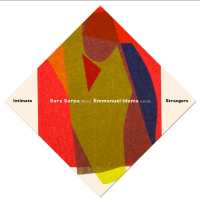
|
-
Emmanuel Iduma's A Stranger's Pose is so rich with images: written, documented, suggested and lyrical, that it just begs the exaltation of music. Consequently, Nigerian born Iduma collaborated with Portuguese composer and vocalist Sara Serpa, who has written a score to a number of especially evocative or illustrative passages. Serpa, alone, or with vocalists Sofia Rei and Aubrey Johnson, sing the lines, or they are recited by Serpa and Iduma. Though intrinsic to the album Intimate Strangers, the music is especially distinguished, riding on undertones and simple melodic lines expressed by the piano (Matt Mitchell), with sotto voce electronics (Qasim Naqvi). It sometimes feels as if the pace in the quiet expectancy of the arrangements, were the footfalls of the perambulating Iduma, as he follows one step with another, seeking discovery.
Carolina Amoruso explores the book and it's musical collaboration in her review.
|
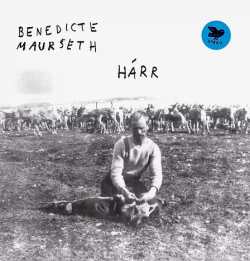
|
-
Harr is a beautiful shape shifter of an album. Part a portrait of a landscape, part the opening of a veil on some family history, part nature walk in Norway. It's satisfying and strangely elusive, all at the same time. The music follows winding paths of the imagination, mixing Benedicte Maurseth's Hardanger fiddle with subtly-placed electronics and other instruments to create a moving, inviting bed of sound. "Heilo," for instance, the longest piece on the disc, presents an utterly different artist from her 2019 solo release. Or does it? The music certainly isn't traditional by any means, but the nature, the history that goes back generations – what is that but tradition?
Read Chris Nickson's review and listen to some excerpts from the album.
|

|
-
Ssilfie-Bondzie, aka Mr. Essiebons, had founded the Essiebons label and record pressing plant- West Africa's first- in the late 1960s... The label's 1970s heyday coincided with changes in Ghanaian popular music, as typical highlife rhythms gave way to edgy, stuttering Afro-funk, mirroring Nigeria's more well-known but no-more-important developments in this area. Essiebons Special 1973 - 1984 Ghana Music Power House shows off some lesser known sides and needless to say, the music presented here continues to show the relentless consistency the Analog Africa label is known for.
Read Bruce Miller's full review and hear a few tracks.
|


|
-
Some music seems to arrive by stealth, made by someone entirely unknown who manages to beguile the ears and the heart. Stella Ariente is one of those albums. It seems to exist out of time; the music could equally have appeared in the 16th century as the 21st and felt completely at home. This is religious singing, from the oral tradition of Alta Murgia in Bari, just above the heel of Italy. Maria Moramarco, from a family of singers, seems to have been collecting songs since the 1970s. She appeared on a 2007 album with the group Uaragniaun, but this seems to be the first release under her own name.
Quite sublime it is, too, musically hewing out a space between sacred and folk music, where late Renaissance music can mingle with hints of North Africa, all adding to the oral tradition that Moramarco so obviously reveres.
Read Chris Nickson's review and listen to some of the songs.
Stella Ariente is our choice for the first Music of the Month selection for 2022. Find out how to subscribe and get music in your mailbox every month as our thank-you for your contribution to RootsWorld.
|

|
-
Langt Ud' I Skoven slipped under the radar, even for many of the band's fans. Here is Dreamers' Circus (with a few friends), plus a Danish children's choir, performing largely traditional songs for children – a interesting subset of Danish folk. It's not something that's been slapped together for an album and performance; there's plenty of time and imagination gone into the arrangements, and everything soars with the trio's usual sense of melody.
Chris Nickson reviews.
|
Music of the Month
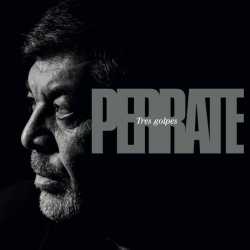
|
-
The craggy black and white photo on the pack gives a clue about the cragginess of the music within, and indeed of Tomás de Perrate's singing. This isn't the flamenco of dazzling guitar and dance. Perrate (Tomás Fernández Soto), who is of an Andalusian gitano flamenco family, has long focused on the emotion of cante jondo, 'deep song.' After mostly listening to a variety of rock and other musics, but conditioned by what he heard in his family, he took up flamenco singing relatively late, and has taken an individual, non-mainstream path within it. Tres Golpes, his first album in eleven years, is his most extreme statement to date. Much of the material on it comes from 16th and 17th century sources, while the title track is an Afro-Colombian song accompanied by palmas (clapping), shouts and rough group singing. He recorded this material as demos, but when producer Raül Refree heard them he wanted to work with Perrate on making them an album. Refree comes from a rock and pop background but is currently lauded for his work with Iberian roots musicians such as his collaboration with Portuguese singer Lina.
Read Andrew Cronshow's critique and hear a number of the songs.
|

|
-
Shriekback's 1000 Books would seem to fall well outside of our usual 'roots.' Perhaps so, but it became the subject of much discussion among a number of our contributors this year, and so here it is.
Lee Blackstone writes, "It's taut, funky, humorous, and politically-charged. There is a lot of musing on where we are all going, personally and collectively, and every inch of it is worth lending an ear... It's a beautiful Frankenstein's monster, grasping for sympathy and understanding, eyes cast in wonder at the fish below the ice and the gill-less humans on the streets." The album includes what at least 3 of RW's writers consider to be one of the best songs of the year, but you can listen, read and decide where to pigeonhole it, if you care and dare.
|
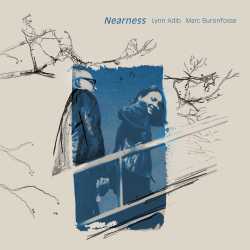
|
-
"The Nearness of You" is a jazz standard written in 1938 by a vaudeville lyricist and a Tin Pan Alley composer. It has been interpreted so many times but always in a certain genre and in a space where jazz elevates simple tunes. Norah Jones, Charlie Parker, Louis Armstrong and Ella Fitzgerald have all taken it into a more complex but very mainstream jazz sound. Along comes Lynn Adib, a singer and composer born and raised in Damascus, Syria, who along with bassist Marc Buronfosse reshapes this song into a haunting painting of sounds. The duo have ushered their jazz to another level, injecting it with music from Syria and translating some of the lyrics to Arabic.
Lisa Saulka explores Nearness, an album of traditional songs and pop standards that defies genre.
|
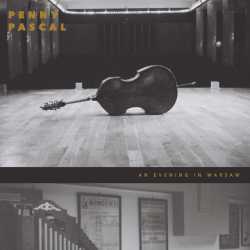
|
-
Imagine you're a Danish quartet with one album under your belt. You're invited to play only your second-ever gig (!), a prestigious event in Warsaw, Poland. What do you do, perform pieces that people might know, or write something entirely new that will never be repeated after that night?
If you're Penny Pascal, you opt for the latter, with a pair of lengthy pieces. The first, "Danish Tunes" is far more than a perfunctory pastiche of Danish dance styles and familiar melodies. Instead, it takes all that as its inspiration, then aims high with original tunes that to flow with the head-raised-feet-moving lightness that characterizes Danish music. The second nods toward a few different styles as well as classical music with remarkable writing skills.
Join Chris Nickson in Warsaw and enjoy the entire concert.
|
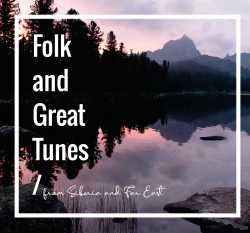
|
-
Folk and Great Tunes from Siberia and Far East is double album compilation that brings together tracks from artists across the enormous Russian region, including rarely heard material from the far north and east. There is singing, both solo and in groups, as well as instrumental music; music traditionally played and also traditional music re-interpreted for a modern audience.
Mike Adcock shares his thoughts on the many and varied artists he finds on the recordings.
|
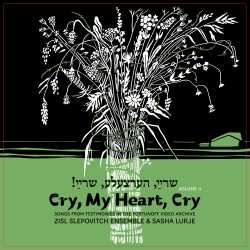
|
-
The Fortunoff Video Archive for Holocaust Testimonies began in 1979 as a means of documenting the lives of thousands who survived the horrors of World War II. Since 1981, the collection has been housed at Yale University's Sterling Memorial Library, where it has garnered international renown for its historical importance. Part of that importance, however, was at risk of being lost: namely, the songs recounted by survivors in their video testimonies.
These caught the attention of Belarusian musicologist and multi-instrumentalist Zisl Slepovitch, who saw an opportunity to revive all-but-forgotten musical legacies of the Jewish ghettos and concentration camps. Joining forces with his ensemble and Latvian singer Sasha Lurje, he set out to arrange and record these songs to "remind us that the survivor singing them represents all those who did not survive to sing again."
The result was the 2020 album, Where Is Our Homeland? Now, Slepovitch and company have returned with a second installment, entitled Cry, My Heart, Cry.
Join Tyran Grillo and explore the archive's music, images and video.
|
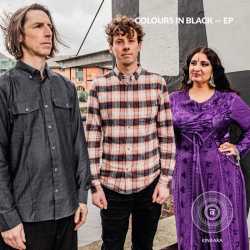
|
-
Colours In Black, the second EP from Kinaara, the Leeds, England trio of guitar, bass, voice, sees them building on the success of last year's Across The River EP, with six pieces covering a broad range of styles, all threaded together by the very sinuous, sultry voice of Satnam Galsian.
It springs out of the traps on with "Kaalay Rang," a Punjabi folk song with a decidedly desert blues groove, featuring some excellent guitar work from John Hogg, playing nicely punchy filigree around the vocal. It's a mix of styles that startles at first, but works in a surprisingly effective fashion, opening up an avenue that could well be ripe for further exploration.
Find out where else Kinaara are going in Chris Nickson's review.
|
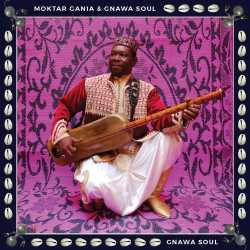
|
-
Gnawa is an ancient music from Moroccan and West African which are near bordering areas. These sounds are familiar to us as they influence jazz, blues and many genres of modern music. What you will hear on Moktar Gania And Gnawa Soul's Masterisé are Islamic and religious songs with rhythms which will sound surprisingly familiar along with ritual poetry, an inspiration to dance and think.
Artistic director Jacques Sanjuan has transformed this music into a gorgeous 21st Century ride. The album has 150 years of Moroccan tradition informing it, yet it would sound innovative in any of the Brooklyn clubs. You will hear guitarist Jean-Marie Ecay, a French Basque guitarist, and Israeli singer of Moroccan origin Neta El Kayam in the groove as well.
Lisa Sahulka finds an album cast in a mix of modern sounds, mysticism and incantations.
|
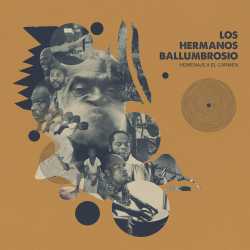
|
-
Lima-based Buh Records has been feverishly bringing attention to experimental South American artists over the last few years; however, they've also dropped recordings of contemporary, roots-based Peruvian sounds not always well known outside the country's borders. These releases have served to celebrate the massive, geographically complex South American country's rich cultural diversity. With its latest releases from Los Hermanos Ballumbrosio and Perkutao, the label digs deep into coastal Afro-Peruvian vocal and percussion based ensembles, both of whom demonstrate Peru's Afro roots run as deep as Colombia's or Brazil's.
Bruce Miller listens to two albums of the country's unadorned, contemporary, always-innovative Black roots.
|
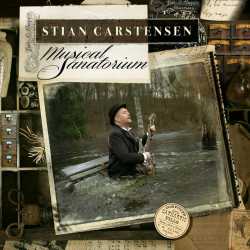
|
-
Stian Carstensen's Musical Sanatorium is a brilliant piece of work by an extraordinary musician; for me, his greatest yet. It is astonishingly ever-changing in sound and direction, not just from track to track but within each track. While it sparks all kinds of images and resonances, there's not a cliché nor a predictable development to be found. Carstensen is that rare thing, a genuine multi-instrumental virtuoso polymath. He's a master of accordion, banjo, kaval, pedal steel, guitar and more, with wide experience in several musical genres, including the Norwegian accordion and fiddling traditions of generations of his family, and the dazzling, asymmetric rhythms of the accordion and kaval music of Bulgaria and other parts of the Balkans where he's frequently travelled, and adding to them high skills in classical music and jazz.
Join Andrew Cronshaw as he dissects the strange brain of this Norwegian artist.
|
Read more reviews from
2022
2021
2020
2019
2018
2017
2016
We Interupt Our Regularly Scheduled Magazine For This Important Announcement.
RootsWorld cannot survive without the support of our readers. If you want to hear great music and read great writers, then we need each listener and reader to contribute just a little to make it happen. Please join us!
Make a One Time Contribution Today!
|
$5.00
|
$10.00
|
$20.00
|
|
$40.00
|
$70.00
|
$100.00
|
Please contribute to our survival.
About RootsWorld: RootsWorld is a world music magazine started in 1993, pretty much at the dawn of the term "world music" as well as the pre-dawn of internet publishing (I suspect this was the first music magazine of any sort published on the www). Our focus is the music of the world: Africa, Asia, Europe, Pacifica and The Americas, the roots of the global musical milieu that has come to be known as world music, be it traditional folk music, jazz, rock or some hybrid. How is that defined? I don't know and don't particularly care at this point: it's music from someplace you aren't, music with roots, music of the world and for the world. OK?
All pages at RootsWorld are © 1992-2020 RootsWorld/ Cliff Furnald / FNI Multimedia Publishing, New Haven CT
The RootsWorld name is protected by US trademark law.
All picture and sound images are the property of the artists and record labels, and are protected by copyright. No file or part of a file may be used for any purpose, commercial or non-commercial, without the express written consent of RootsWorld or the other copyright owners.
About the use of sound files and copyright protections at RootsWorld
|
|
